Author Biographies 23
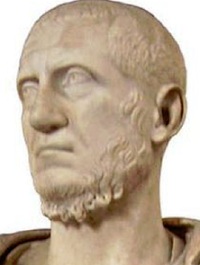 Tacitus
Tacitus
56 AD-117 AD
Publius (or Gaius) Cornelius Tacitus (56 AD-117 AD) was a senator and a historian of the Roman Empire. The surviving portions of his two major works – the Annals and the Histories – examine the reigns of the Roman Emperors Tiberius, Claudius, Nero and those who reigned in the Year of the Four Emperors. These two works span the history of the Roman Empire from the death of Augustus in 14 AD to (presumably) the death of emperor Domitian in 96 AD. There are enormous lacunae in the surviving texts, including one four books long in the Annals.
Other works by Tacitus discuss oratory, Germania and biographical notes about his father-in-law, Agricola, primarily during his campaign in Britannia.
While Tacitus’ works contain much information about his world, details regarding his personal life are scarce. What little is known comes from scattered hints throughout his work, the letters of his friend and admirer Pliny the Younger, an inscription found at Mylasa in Caria and educated guesswork.
Tacitus was born in 56 or 57 AD to an equestrian family; like many Latin authors of the Golden and Silver ages, he was from the provinces, probably either northern Italy, Gallia Narbonensis or Hispania. The exact place and date of his birth are not known. As a young man, Tacitus studied rhetoric in Rome to prepare for a career in law and politics; like Pliny, he may have studied under Quintilian.
He started his career under Vespasian, but it was in 81 or 82 AD, under Titus, that he entered political life as quaestor. He advanced steadily through the cursus honorum, becoming praetor in 88 AD and a quindecemvir, a member of the priest college in charge of the Sibylline Books and the Secular games. He gained acclaim as a lawyer and an orator; his skill in public speaking gave a marked irony to his cognomen: Tacitus (“silent”).
He served in the provinces from ca. 89 AD to ca. 93 AD, either in command of a legion or in a civilian post. He survived Domitian’s reign of terror (81-96 AD) but the experience left him jaded and grim and gave him the hatred of tyranny evident in his works. From his seat in the Senate, he became suffect consul in 97 AD during the reign of Nerva, being the first of his family to do so. During his tenure, he reached the height of his fame as an orator when he delivered the funeral oration for the famous veteran soldier, Lucius Verginius Rufus.
A lengthy absence from politics and law followed while he wrote his two major works: The Histories and The Annals. In 112 or 113 AD, he held the highest civilian governorship, that of the Roman province of Asia in Western Anatolia. A passage in the Annals fixes 116 AD as the terminus post quem of his death, which may have been as late as 125 or even 130 AD.
Source: http://en.wikipedia.org/wiki/Tacitus
 Bibliography
Bibliography
Press your browser’s BACK button to return to the previous page.
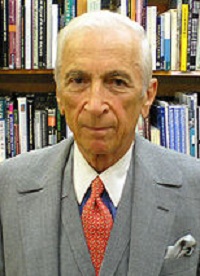 Gay Talese
Gay Talese
1932-
Gay Talese (born February 7, 1932) is an American author. He wrote for The New York Times in the early 1960s and helped to define literary journalism. His most famous articles are about Joe DiMaggio, Dean Martin and Frank Sinatra. He is a visiting writer at the Master of Professional Writing Program at the University of Southern California each spring.
Talese was born into a Roman Catholic Italian-American family in Ocean City, New Jersey, located just south of Atlantic City. His southern Italian father, Joseph Talese, was a tailor who had immigrated to the United States in 1922, and his mother, the former Catherine DePaolo, was a buyer for a Brooklyn department store.
At school as a child, he wore hand-crafted suits from his father’s shop which, he later reflected in his memoir, Origins of a Nonfiction Writer (1996), caused him to appear to be older than his classmates. He recounted his early years in his book, Unto the Sons. Talese graduated from Ocean City High School in 1949.
Talese is married to Nan Talese, a New York editor who runs the Nan A. Talese/Doubleday imprint. Gay and Nan Talese’s marriage will be the subject of Talese’s next book, the third in a series published by Knopf. The first two books, Unto the Sons and A Writer’s Life, were published in 1992 and 2006, respectively.
Talese remains active in the Italian-American community, including the National Italian-American Foundation, which hosted a writer’s series in his name. He has been an outspoken advocate for more Italian-Americans to pursue careers in writing and editing.
Source: http://en.wikipedia.org/wiki/Gay_Talese
 Bibliography
Bibliography
Press your browser’s BACK button to return to the previous page.
 Amy Tan
Amy Tan
1952-
Amy Tan (born February 19, 1952) is an American writer whose works explore mother-daughter relationships. Her most well-known work is The Joy Luck Club.
Tan received her bachelor’s and master’s degrees in English and linguistics from San Jose State University and later did doctoral linguistics studies at University of California, Santa Cruz, and University of California, Berkeley.
Tan has written several other bestselling novels, including The Kitchen God’s Wife, The Hundred Secret Senses, The Bonesetter’s Daughter and Saving Fish from Drowning. She also wrote a collection of nonfiction essays, The Opposite of Fate: A Book of Musings. Her most recent novel, Saving Fish from Drowning, explores the tribulations experienced by a group of people who disappear while on an art expedition in the jungles of Burma. In addition to these, Tan has written two children’s books: The Moon Lady (1992) and Sagwa, the Chinese Siamese Cat (1994).
Tan was born in Oakland, California. She is the second of three children born to Chinese immigrants John Tan, an electrical engineer and Baptist minister, and Daisy (nee Li), who was forced to leave her three daughters from a previous marriage behind in Shanghai. This incident provided the basis for Tan’s first novel, the 1989 New York Times bestseller, The Joy Luck Club. When Tan was 15 years old, her older brother Peter and her father both died of brain tumors within a year of each other. Daisy moved Tan and her younger brother, John Jr., to Switzerland, where she finished high school. During this period, she learned about her mother’s former marriage to an abusive man in China and of their four children, including three daughters and a son who died as a toddler.
In 1987, Tan traveled with Daisy to China. There, she met her three half-sisters.
Source: http://en.wikipedia.org/wiki/Amy_Tan
 Bibliography
Bibliography
Press your browser’s BACK button to return to the previous page.
 Booth Tarkington
Booth Tarkington
1869-1946
Booth Tarkington (July 29, 1869-May 19, 1946) was an American novelist and dramatist best known for his Pulitzer Prize-winning novels, The Magnificent Ambersons and Alice Adams. He is one of only three novelists (the others being William Faulkner and John Updike) to win the Pulitzer Prize for Fiction more than once.
Tarkington was born Newton Booth Tarkington in Indianapolis, Indiana. He was the son of John S. Tarkington and Elizabeth Booth Tarkington, and named after his maternal uncle Newton Booth, then the governor of California. Tarkington was also related to Chicago Mayor James Hutchinson Woodworth (1848-1850).
Tarkington first attended Shortridge High School in Indianapolis but completed his secondary education at Phillips Exeter Academy, a boarding school on the East Coast. He attended Purdue University for two years, was a member of the university’s Morley Eating Club and then transferred to Princeton University for another two years but never officially graduated from either. Tarkington made substantial donations to Purdue for the building of an all-men’s residence hall, which the university named Tarkington Hall in his honor. The university also awarded him an honorary degree.
At Princeton, Tarkington was active as a student-actor in what is now known as “The Triangle Club.” According to Triangle’s official history, Tarkington made his first acting appearance in the club’s Shakespearean spoof, Katherine. He returned to the Triangle stage as Cassius in the 1893 production, The Honorable Julius Caesar. Tarkington gained prominence that year at Princeton as a co-author of the play and as the President of Princeton’s Dramatic Association. In addition to his membership in and role as founder of The Triangle Club, he was also a member of the Ivy Club, the first of Princeton’s historic Eating Clubs. At Princeton, he also edited The Nassau Literary Magazine. Tarkington failed to earn his undergraduate degree, the A.B., due to a single missing course in the classics. Nevertheless, his place within campus society was already determined when he was voted most popular in the class for 1893. In his adult life, he was asked to return to Princeton on two occasions for the conferral of two honorary degrees, an A.M. in 1899 and a Litt.D. in 1918. The conferral of more than one honorary degree on an alumnus at Princeton University remains a record for the institution.
Tarkington was a world traveler who spent much of his later life in Kennebunkport, Maine, and left his papers to Colby College. At the same time, he was also an unabashed Midwestern regionalist and set much of his fiction in his native Indiana. One of the more popular American novelists of his time, his The Two Vanrevels and Mary’s Neck appeared on the annual bestseller lists a total of nine times. The Penrod novels depict a typical upper-middle-class American boy of 1910 vintage, revealing a fine, bookish sense of American humor.
Tarkington began losing his eyesight in the 1920s and was blind in his later years. He continued producing his works by dictating to a secretary. He lived at 4270 North Meridian in Indianapolis from 1923 until his death. He is buried in Crown Hill Cemetery, Marion County, Indianapolis, Indiana.
Source: http://en.wikipedia.org/wiki/Booth_Tarkington
 Bibliography
Bibliography
Press your browser’s BACK button to return to the previous page.
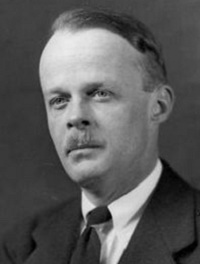 Allen Tate
Allen Tate
1899-1979
John Orley Allen Tate (November 19, 1899-February 9, 1979) was an American poet, essayist, social commentator and Poet Laureate Consultant in Poetry to the Library of Congress from 1943 to 1944.
Tate was born near Winchester, Kentucky, to John Orley Tate, a businessman, and Eleanor Parke Custis Varnell. In 1916 and 1917, Tate studied the violin at the Cincinnati Conservatory of Music.
He began attending Vanderbilt University in 1918, where he met fellow poet Robert Penn Warren. Warren and Tate were invited to join a group of young Southern poets under the leadership of John Crowe Ransom; the group were known as the Fugitive Poets and later as the Southern Agrarians. Tate contributed to the group’s magazine, The Fugitive, and to the agrarian manifesto, I’ll Take My Stand, published in 1930. This was followed in 1938 by Who Owns America? Tate also joined Ransom to teach at Kenyon College in Gambier, Ohio.
In 1924, Tate began a four-year sojourn in New York City, where he worked freelance for The Nation, contributed to The Hound and Horn, Poetry magazine and others. He worked as a janitor and lived la vie boheme in Greenwich Village with Caroline Gordon. When urban life proved too overwhelming, he repaired to “Robber Rocks,” a house in Patterson, New York, with friends Slater Brown and his wife, Sue, Hart Crane and Malcolm Cowley. He would, some years later, contribute to the conservative National Review as well.
The year 1928 saw the publication of Tate’s most famous poem, “Ode to the Confederate Dead,” not to be confused with “Ode to the Confederate Dead at Magnolia Cemetery,” written by American Civil War poet and South Carolina native, Henry Timrod. In 1928, Tate also published a biography, Stonewall Jackson: The Good Soldier. In 1929, Tate published a second biography, Jefferson Davis: His Rise and Fall.
By the 1930s, Tate had returned to Tennessee, where he worked on social commentary influenced by his agrarian philosophy. In addition to his work on I’ll Take My Stand, he published Who Owns America?, which was a conservative response to Franklin D. Roosevelt’s New Deal. During this time, Tate also became the de facto associate editor of The American Review, which was published and edited by Seward Collins. Tate believed The American Review could popularize the work of the Southern Agrarians. He objected to Collins’ open support of fascists Benito Mussolini and Adolf Hitler, however, and condemned fascism in an article in The New Republic in 1936.
In 1938, Tate published his only novel, The Fathers, which drew upon knowledge of his mother’s ancestral home and family in Fairfax County, Virginia.
Tate was a poet-in-residence at Princeton University until 1942. He founded the Creative Writing program at Princeton and mentored Richard Blackmur, John Berryman and others. In 1942, Tate assisted novelist and friend Andrew Lytle in transforming The Sewanee Review, America’s oldest literary quarterly, from a modest journal into one of the most prestigious in the nation.
Tate died in Nashville, Tennessee.
Source: http://en.wikipedia.org/wiki/Allen_Tate
 Bibliography
Bibliography
Press your browser’s BACK button to return to the previous page.
 Edward Taylor
Edward Taylor
1642?-1729
For more than 200 years, America’s finest poet of the 17th century was unknown. Edward Taylor, born around 1642 in England during the Puritan domination, spent his childhood and young adult life to age 24 in his homeland, venturing in 1668 to the new country – New England.
Immediately upon his arrival to the new country, he entered Harvard University. Three short years later, Taylor graduated from Harvard University and accepted a call to minister to the town of Westfield, Massachusetts. It would be in this little frontier town of Westfield, Massachusetts, that he would spend the rest of his life. He died in 1729, serving God and the people of Westfield, Massachusetts.
Taylor was a very intellectual man and he took his intellect with him to that wilderness town, helping to build defenses against Indians, civil disorder, diseases, heresy and the apostasy of liberal church reformers like Solomon Stoddard of Northampton. Taylor’s life found its awareness and focal point in things of the spirit rather than things of the world. He studied and meditated on things of the Lord for more than 40 years. From 1682 to 1725, Taylor studied the mysteries of the Lord’s Supper. Holy Communion was something in which Taylor found great mystery and he studied upon the mystery of the sacrament, putting his words into 217 long dramatic poems of a narrative nature called “God’s Determinations.” These preparatory meditations were of great importance to Taylor and he made great efforts to make these writings devotional in nature. Taylor vehemently applied imagery and English meter to his poems.
Although he poured his heart and soul into these works, the majority of them were unpublished until the late 1930s. Thomas Johnson discovered the manuscript, which was in the possession of the Yale University Library, and recognized the importance of this manuscript as a great literary masterpiece.
Taylor’s poems show us that even the most traditional, very orthodox, purest Puritan could paint a picture in the form of poetry. For Taylor, this form of writing was pure worship of the Lord. He saw the beauty and mystery of God’s hand in all of humankind and all of nature and wrote about it. In his “Treatise Concerning the Lord’s Supper,” written 1694, he urges that all “meditate upon the feast … its causes, its nature, its guests, its dainties, its reason, and ends: and its benefits, etc. For it carries in its nature and circumstances an umbrage, or epitomized draught of the whole grace of the gospel.” Taylor held the sacrament universal as a focal point for almost everything he wrote. He considered the sacrament pure and holy and celebrated it often.
Source: http://www.famouspoetsandpoems.com/poets/edward_taylor/biography
 Bibliography
Bibliography
Press your browser’s BACK button to return to the previous page.
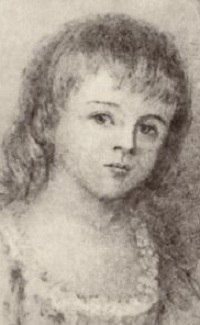 Jane Taylor
Jane Taylor
1783-1824
Jane Taylor (September 23, 1783-April 13, 1824) was an English poet and novelist. She wrote the words for the song, “Twinkle, Twinkle, Little Star,” in 1806, at age 23, while living in Shilling Street, Lavenham, Suffolk. The poem is now known worldwide, but its authorship is generally forgotten. It was first published under the title, “The Star,” in Rhymes for the Nursery, a collection of poems by Taylor and her older sister, Ann (later Mrs. Gilbert).
Born in London, Jane Taylor and her family later lived in Colchester, Essex, and Ongar. The Taylor sisters were part of an extensive literary family. Their father, Isaac Taylor, was an engraver and later a dissenting minister. Their mother, Mrs. (Anne Martin) Taylor (1757-1830) wrote seven works of moral and religious advice, two of them fictionalized.
The collection, Original Poems for Infant Minds by Several Young Persons (primarily written by Ann and Jane Taylor and Adelaide O’Keeffe, the authors were identified for each poem), was first issued in two volumes in 1804 and 1805. Rhymes for the Nursery followed in 1806 and Hymns for Infant Minds in 1808. The most famous work out of these was “The Star,” which was set to a French tune.
Taylor’s novel, Display (1814), is reminiscent of Maria Edgeworth, or perhaps even Jane Austen. Her Essays in Rhyme appeared in 1816 and contained some significant poetry. In the fictional Correspondence between a Mother and Her Daughter at School (1817), Taylor collaborated with her mother. Throughout her life, Taylor wrote many essays, plays, stories, poems and letters that were never published.
Jane Taylor died of breast cancer at the age of 40.
Source: http://en.wikipedia.org/wiki/Jane_Taylor_%28poet%29
 Bibliography
Bibliography
Press your browser’s BACK button to return to the previous page.
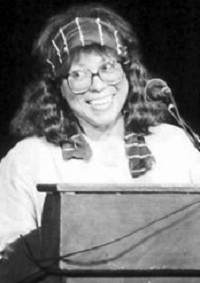 Mildred Taylor
Mildred Taylor
1943-
Mildred DeLois Taylor (born September 13, 1943, in Jackson, Mississippi) is an African-American author, known for her works exploring the struggle faced by African-American families in the Deep South. Taylor lived in Jackson as a child only a short time, then moved to Toledo, Ohio, where she spent most of her childhood.
In the 1950s, Taylor attended newly integrated schools in Toledo; she graduated from Scott High School in 1961 and from the University of Toledo in 1965. After graduation from college, she joined the Peace Corps and spent two years in Ethiopia. When she returned to the United States, she enrolled in the University of Colorado, eventually earning a master’s degree. She then settled in Los Angeles to pursue her writing career.
Taylor’s most famous book is Roll of Thunder, Hear My Cry. The novel won the 1977 Newbery Medal. Roll of Thunder, Hear My Cry is the middle book, chronologically, in a five-book series that also includes The Land, Song of the Trees, Let the Circle Be Unbroken and The Road to Memphis.
She lives in Colorado with her daughter.
Source: http://en.wikipedia.org/wiki/Mildred_D._Taylor
 Bibliography
Bibliography
Press your browser’s BACK button to return to the previous page.
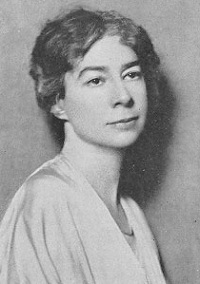 Sara Teasdale
Sara Teasdale
1884-1933
Sara Teasdale (August 8, 1884-January 29, 1933) was an American lyrical poet. She was born Sarah Trevor Teasdale in St. Louis, Missouri.
Teasdale had poor health for most of her life and it was only at age 9 that she was well enough to begin school. In 1898, she began attending Mary Institute but switched rapidly to Hosmer Hall in 1899, where she graduated in 1903.
Teasdale’s first poem was published in Reedy’s Mirror, a local newspaper, in 1907. Her first collection of poems, Sonnets to Duse and Other Poems, was published that same year. Teasdale’s second collection of poems, Helen of Troy and Other Poems, was published in 1911. It was well received by critics, who praised its lyrical mastery and romantic subject matter.
In 1913, Teasdale fell in love with the poet, Vachel Lindsay. He wrote her daily love letters but, nevertheless, she married Ernst Filsinger, a rich exporter, in 1914. Teasdale and Lindsay remained friends throughout their lives.
Teasdale’s third poetry collection, Rivers to the Sea, was published in 1915. The collection received further critical praise.
In 1918, her poetry collection, Love Songs, won three awards: The Columbia University Poetry Society prize, the 1918 Pulitzer Prize for poetry and the annual prize of the Poetry Society of America. She was not happy in her marriage, divorcing Filsinger in 1929. In 1933, she committed suicide by overdosing on sleeping pills. Her friend Lindsay had committed suicide two years earlier.
The poem, “There Will Come Soft Rains,” from her 1920 collection, Flame and Shadow, inspired and was featured in a famous short story of the same name by Ray Bradbury.
In 1994, she was inducted into the St. Louis Walk of Fame.
She is interred in the Bellefontaine Cemetery in St. Louis.
Source: http://en.wikipedia.org/wiki/Sara_Teasdale
 Bibliography
Bibliography
Press your browser’s BACK button to return to the previous page.
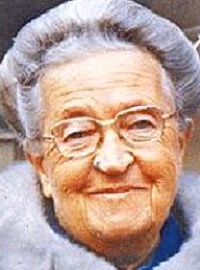 Corrie Ten Boom
Corrie Ten Boom
1892-1983
Cornelia “Corrie” ten Boom (April 15, 1892, in Amsterdam-April 15, 1983) was a Dutch Christian who, with her father and other family members, helped many Jews escape the Nazi Holocaust during World War II. Her family was arrested due to an informant in 1944 and her father died 10 days later at Scheveningen prison where they were first held. A sister, brother and nephew were released, but Corrie and her sister Betsie were sent to Ravensbruck concentration camp, where only Corrie survived.
Ten Boom wrote numerous books and spoke frequently in the post-war years about her family’s efforts to aid Holocaust survivors. She wrote an autobiography, The Hiding Place (1971), about her experiences.
In 1977, Corrie ten Boom, then 85 years old, moved to a suburb of Orange County, California. Successive strokes in 1978 took away her powers of speech and left her an invalid for the last five years of her life. She died on her 91st birthday, April 15, 1983.
Source: http://en.wikipedia.org/wiki/Corrie_ten_Boom
 Bibliography
Bibliography
Press your browser’s BACK button to return to the previous page.
 Alfred (Lord) Tennyson
Alfred (Lord) Tennyson
1809-1892
Alfred Tennyson, 1st Baron Tennyson, (August 6, 1809-October 6, 1892) was Poet Laureate of the United Kingdom during much of Queen Victoria’s reign and remains one of the most popular poets in the English language.
Tennyson excelled at penning short lyrics, such as “In the Valley of Cauteretz,” “Break, Break, Break,” “The Charge of the Light Brigade,” “Tears, Idle Tears” and “Crossing the Bar.” Tennyson also wrote some notable blank verse, including “Idylls of the King,” “Ulysses” and “Tithonus.” During his career, Tennyson attempted drama but his plays enjoyed little success.
A number of phrases from Tennyson’s work have become commonplaces of the English language, including “Nature, red in tooth and claw,” “’Tis better to have loved and lost / Than never to have loved at all,” “Theirs not to reason why, / Theirs but to do and die,” “My strength is as the strength of ten, / Because my heart is pure,” “Knowledge comes, but Wisdom lingers” and “The old order changeth, yielding place to new.” He is the ninth most-frequently quoted writer in The Oxford Dictionary of Quotations.
Tennyson was born in Somersby, Lincolnshire, a rector’s son and fourth of 12 children. He derived from a middle-class line of Tennysons but also had noble and royal ancestry. Tennyson entered Trinity College, Cambridge, in 1827. His first publication was a collection of “his boyish rhymes and those of his elder brother Charles,” entitled Poems by Two Brothers, published in 1827. He published his first solo collection, Poems Chiefly Lyrical, in 1830. “Claribel” and “Mariana,” which later took their place among Tennyson’s most celebrated poems, were included in this volume.
In 1833, Tennyson published his second book of poetry, which included his well-known poem, “The Lady of Shalott.”
In 1842, while living modestly in London, Tennyson published two volumes of Poems, of which the first included works already published and the second was made up almost entirely of new poems. They met with immediate success. It was in 1850 that Tennyson reached the pinnacle of his career, finally publishing his masterpiece, In Memoriam A.H.H.
After Wordsworth’s death in 1850, Tennyson was appointed to the position of Poet Laureate, which he held until his own death in 1892, by far the longest tenure of any laureate before or since. He fulfilled the requirements of this position by turning out appropriate but often uninspired verse. In 1855, Tennyson produced one of his best-known works, “The Charge of the Light Brigade.” Other esteemed works written in the post of Poet Laureate include “Ode on the Death of the Duke of Wellington” and “Ode Sung at the Opening of the International Exhibition.”
Tennyson continued writing into his 80s. He died on October 6, 1892, at Aldworth, aged 83.
Source: http://en.wikipedia.org/wiki/Alfred,_Lord_Tennyson
 Bibliography
Bibliography
Press your browser’s BACK button to return to the previous page.
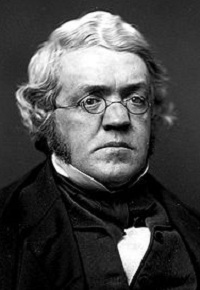 William Makepeace Thackeray
William Makepeace Thackeray
1811-1863
William Makepeace Thackeray (July 18, 1811-December 24, 1863) was an English novelist of the 19th century. He was famous for his satirical works, particularly Vanity Fair, a panoramic portrait of English society.
Thackeray, an only child, was born in Calcutta, India, where his father, Richmond Thackeray, was secretary to the board of revenue in the British East India Company. His mother, Anne Becher, was the second daughter of Harriet Becher and John Harman Becher, who was also a secretary for the East India Company.
William’s father died in 1815, which caused his mother to decide to return William to England in 1816 (she remained in India). In England, he was educated at Trinity College, Cambridge, until February 1829. Never too keen on academic studies, he left the university in 1830, though some of his earliest writing appeared in university publications, The Snob and The Gownsman. He began to study law at the Middle Temple but soon gave that up.
Thackeray’s years of semi-idleness ended after he married and began “writing for his life,” as he put it, turning to journalism in an effort to support his young family. He primarily worked for Fraser’s Magazine, a sharp-witted and sharp-tongued conservative publication for which he produced art criticism, short fictional sketches and two longer fictional works: Catherine and The Luck of Barry Lyndon. From 1837 to 1840, he also reviewed books for The Times. Later, he began writing for the newly created Punch magazine, where he published The Snob Papers, later collected as The Book of Snobs. This work popularized the modern meaning of the word “snob.”
In the early 1840s, Thackeray had some success with two travel books, The Paris Sketch Book and The Irish Sketch Book. The work that really established his fame was the novel, Vanity Fair, which first appeared in serialized installments beginning in January 1847.
For the remaining decade and a half of his life, he produced several large novels, notably Pendennis, The Newcomes and The History of Henry Esmond, despite various illnesses. He twice visited the United States on lecture tours during this period. Thackeray also gave lectures in London on the English humorists of the 18th century and on the first four Hanoverian monarchs. The latter series was published in book form as The Four Georges.
His health worsened during the 1850s and he was plagued by a recurring stricture of the urethra that incapacitated him for days at a time. He also felt he had lost much of his creative impetus. He worsened matters by overeating, drinking to excess and avoiding exercise. On December 23, 1863, after returning from dining out and before dressing for bed, Thackeray suffered a stroke and was found dead on his bed in the morning.
Source: http://en.wikipedia.org/wiki/William_Makepeace_Thackeray
 Bibliography
Bibliography
Press your browser’s BACK button to return to the previous page.
 The U.S. Constitution
The U.S. Constitution
1787
The Constitution of the United States is the supreme law of the United States of America. The first three Articles of the Constitution establish the rules and separate powers of the three branches of the federal government: a legislature, the bicameral Congress; an executive branch led by the President; and a federal judiciary headed by the Supreme Court.
The Constitution was adopted on September 17, 1787, by the Constitutional Convention in Philadelphia, Pennsylvania, and ratified by conventions in 11 states. The first 10 amendments are known as the Bill of Rights. The Constitution has been amended 17 times (for a total of 27 amendments) and its principles are applied in courts of law by judicial review.
The Constitution guides American society in law and political culture. It is the oldest charter of supreme law in continuous use has influenced later international figures establishing national constitutions. Recent impulses for reform center on concerns for extending democracy and balancing the Federal budget.
Source: http://en.wikipedia.org/wiki/United_States_Constitution
 Bibliography
Bibliography
Press your browser’s BACK button to return to the previous page.
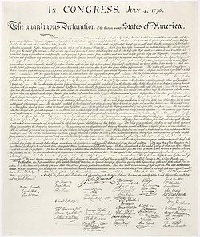 The U.S. Declaration of Independence
The U.S. Declaration of Independence
1776
The Declaration of Independence was a statement adopted by the Continental Congress on July 4, 1776, which announced that the thirteen American colonies then at war with Great Britain regarded themselves as independent states, and no longer a part of the British Empire. John Adams put forth a resolution earlier in the year which made a formal declaration inevitable. A committee was assembled to draft the formal declaration, to be ready when congress voted on independence. Adams persuaded the committee to select Thomas Jefferson to compose the original draft of the document, which congress would edit to produce the final version. The Declaration was ultimately a formal explanation of why Congress had voted on July 2 to declare independence from Great Britain, more than a year after the outbreak of the American Revolutionary War. The Independence Day of the United States of America is celebrated on July 4, the day Congress approved the wording of the Declaration.
After ratifying the text on July 4, Congress issued the Declaration of Independence in several forms. It was initially published as a printed broadside that was widely distributed and read to the public. The most famous version of the Declaration, a signed copy that is usually regarded as the Declaration of Independence, is displayed at the National Archives in Washington, D.C. Although the wording of the Declaration was approved on July 4, the date of its signing has been disputed. Most historians have concluded that it was signed nearly a month after its adoption, on August 2, 1776, and not on July 4 as is commonly believed. The original July 4 United States Declaration of Independence manuscript was lost while all other copies have been derived from this original document.
The sources and interpretation of the Declaration have been the subject of much scholarly inquiry. The Declaration justified the independence of the United States by listing colonial grievances against King George III, and by asserting certain natural and legal rights, including a right of revolution. Having served its original purpose in announcing independence, the text of the Declaration was initially ignored after the American Revolution. Since then, it has come to be considered a major statement on human rights, particularly its second sentence:
“We hold these truths to be self-evident, that all men are created equal, that they are endowed by their Creator with certain unalienable Rights, that among these are Life, Liberty and the pursuit of Happiness.”
This has been called “one of the best-known sentences in the English language,” containing “the most potent and consequential words in American history.” The passage came to represent a moral standard to which the United States should strive. This view was notably promoted by Abraham Lincoln, who considered the Declaration to be the foundation of his political philosophy, and argued that the Declaration is a statement of principles through which the United States Constitution should be interpreted. It has inspired work for the rights of marginalized people throughout the world.
Source: http://en.wikipedia.org/wiki/United_States_Declaration_of_Independence
 Bibliography
Bibliography
Press your browser’s BACK button to return to the previous page.
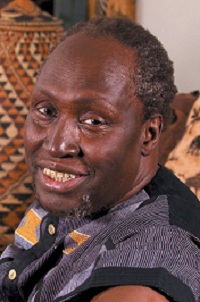 Ngugi wa Thiong’o
Ngugi wa Thiong’o
1938-
Ngugi wa Thiong’o (born January 5, 1938) is a Kenyan author, formerly working in English and now working in Gikuyu. His work includes novels, plays, short stories and essays, ranging from literary and social criticism to children’s literature. He is the founder and editor of the Gikuyu-language journal, Mutiiri.
In 1977, Ngugi embarked upon a novel form of theater in his native Kenya that sought to liberate the theatrical process from what he held to be “the general bourgeois education system” by encouraging spontaneity and audience participation in the performances. Ngugi’s project sought to “demystify” the theatrical process and to avoid the “process of alienation (that) produces a gallery of active stars and an undifferentiated mass of grateful admirers” which, according to Ngugi, encourages passivity in “ordinary people.” Although Ngaahika Ndeenda was a commercial success, it was shut down by the authoritarian Kenyan regime six weeks after its opening. Ngugi was subsequently imprisoned for more than a year.
Adopted as an Amnesty International prisoner of conscience, the artist was released from prison and fled Kenya. In the United States, he taught at Yale University for some years and has since also taught at New York University, with a dual professorship in Comparative Literature and Performance Studies, and the University of California, Irvine. Ngugi has frequently been regarded as a likely candidate for the Nobel Prize in Literature. His son is the author Mukoma wa Ngugi.
Source: http://en.wikipedia.org/wiki/Ng%C5%A9g%C4%A9_wa_Thiong%27o
 Bibliography
Bibliography
Press your browser’s BACK button to return to the previous page.
 Dylan Thomas
Dylan Thomas
1914-1953
Dylan Marlais Thomas was born on October 27, 1914, in South Wales at 5 Cwmdonkin Drive in Swansea. His father was an English Literature professor at the local grammar school and would often recite Shakespeare to Thomas before he could read. He loved the sounds of nursery rhymes, foreshadowing his love for the rhythmic ballads of Hopkins, Yeats and Poe.
He dropped out of school at 16 to become a junior reporter for The South Wales Daily Post. By December 1932, he left his job at The Post and decided to concentrate on his poetry full time. It was during this time, in his late teens, that Thomas wrote more than half of his collected poems.
In 1934, when Thomas was 20, he moved to London, won the Poet’s Corner book prize and published his first book, 18 Poems, to great acclaim. The book drew from a collection of poetry notebooks that Thomas had written years earlier, as would many of his most popular books. During this period of success, Thomas also began a habit of alcohol abuse.
In January 1950, at the age of 35, Thomas visited America for the first time. His reading tours of the United States, which did much to popularize the poetry reading as a new medium for the art, are famous and notorious: Thomas was the archetypal Romantic poet of the popular American imagination – he was flamboyantly theatrical, a heavy drinker, engaged in roaring disputes in public and read his work aloud with tremendous depth of feeling and a singing Welsh lilt.
Thomas toured America four times, with his last public engagement taking place at the City College of New York. A few days later, he collapsed in the Chelsea Hotel after a long drinking bout at the White House Tavern. On November 9, 1953, he died at St. Vincent’s Hospital in New York City at the age of 39.
Source: http://www.poets.org/poet.php/prmPID/150
 Bibliography
Bibliography
Press your browser’s BACK button to return to the previous page.
 Edward Thomas
Edward Thomas
1878-1917
Philip Edward Thomas (March 3, 1878-April 9, 1917) was an Anglo-Welsh poet and journalist. He is commonly considered a war poet, although few of his poems deal directly with his war experiences. An accomplished writer, Thomas only turned to poetry under the stress of whether or not to enlist in the army to fight in World War I during the autumn of 1914.
Thomas was born in Lambeth, London. He was educated at Battersea Grammar School, St. Paul’s School and Lincoln College, Oxford. His family were Welsh. While still an undergraduate, he determined to live his life by the pen. He then worked as a book reviewer, reviewing up to 15 books every week. He was already a seasoned writer before the outbreak of war, having worked as literary critic at The Daily Chronicle in London.
Even though Thomas thought that poetry was the highest form of literature and regularly reviewed it, he only became a full-time poet under the pressure of choosing whether or not to enlist for service in World War I. Living at Steep, in East Hampshire, he initially published some poetry under the name Edward Eastaway. He also wrote a novel and some works of nonfiction.
Thomas enlisted in the Artists’ Rifles in July 1915, despite being a mature, married man who could claimed exemption. He was promoted to corporal and, in November 1916, was commissioned into the Royal Garrison Artillery.
He was killed in action at Arras on April 9, 1917, soon after he arrived in France.
Source: http://en.wikipedia.org/wiki/Edward_Thomas_%28poet%29
 Bibliography
Bibliography
Press your browser’s BACK button to return to the previous page.
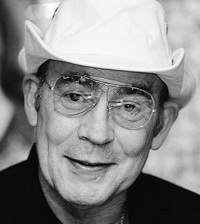 Hunter S. Thompson
Hunter S. Thompson
1937-2005
Hunter Stockton Thompson (July 18, 1937-February 20, 2005) was an American journalist and author, most famous for his works Fear and Loathing in Las Vegas (1971) and Fear and Loathing on the Campaign Trail ’72 (1973).
He is credited as the creator of Gonzo journalism, a style of reporting in which reporters involve themselves in the action to such a degree that they become central figures of their stories. He is also known for his unrepentant, lifelong use of alcohol, LSD, mescaline and cocaine (among other substances); his love of firearms; his longstanding hatred of Richard Nixon; and his iconoclastic contempt for authoritarianism.
While suffering a bout of health problems, he committed suicide in 2005, at the age of 67.
Source: http://en.wikipedia.org/wiki/Hunter_S._Thompson
 Bibliography
Bibliography
Press your browser’s BACK button to return to the previous page.
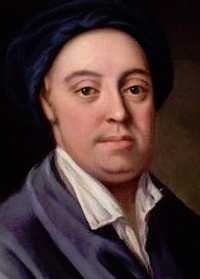 James Thomson
James Thomson
1700-1748
James Thomson (September 11, 1700-August 27, 1748) was a Scottish poet and playwright, known for his masterpiece, The Seasons, and the lyrics of “Rule, Britannia!” He was born in Ednam in Roxburghshire around September 11, 1700, and baptized on September 15.
Thomson may have attended the parish school of Southdean before going to the grammar school in Jedburgh in 1712. He failed to distinguish himself there. He was, however, encouraged to write poetry. While some early poems by Thomson survive, he burned most of them on New Year’s Day each year.
Thomson entered the College of Edinburgh in autumn 1715, destined for the Presbyterian ministry. At Edinburgh, he studied metaphysics, Logic, Ethics, Greek, Latin and Natural Philosophy. He completed his arts course in 1719 but chose not to graduate, instead entering Divinity Hall to become a minister. At Edinburgh, Thomson became member of the Grotesque Club, a literary group, and he met his lifelong friend, David Mallet. After the successful publication of some of his poems in The Edinburgh Miscellany, Thomson followed Mallet to London in February 1725 in an effort to publish his verse.
In 1725, he published “Winter,” the first poem of The Seasons. By 1727, Thomson was working on “Summer,” published in February, and was working at Watt’s Academy, a school for young gentlemen and a bastion of Newtonian science. In the same year, Millian published a poem by Thomson, “A Poem to the Memory of Sir Isaac Newton,” who had died in March. Leaving Watt’s academy, Thomson hoped to earn a living through his poetry, helped by his acquiring several wealthy patrons, including Thomas Rundle, the countess of Hertford and Charles Talbot, 1st Baron Talbot.
He wrote “Spring” in 1728 and finally “Autumn” in 1730, when the set of four was published together as The Seasons. During this period, he also wrote other poems and his first play, The Tragedy of Sophonisba (1729). His next major work, Liberty, was published in 1734.
In 1740, he collaborated with Mallet on the masque, Alfred. Thomson’s words for “Rule Britannia,” written as part of that masque and set to music by Thomas Arne, became one of the most well-known British patriotic songs.
In later years, Thomson lived in Richmond upon Thames and it was there that he wrote his final work, The Castle of Indolence, which was published just before his untimely death on August 27, 1748.
Source: http://en.wikipedia.org/wiki/James_Thomson_%28poet%29
 Bibliography
Bibliography
Press your browser’s BACK button to return to the previous page.
 Henry David Thoreau
Henry David Thoreau
1817-1862
Henry David Thoreau was a complex man of many talents who worked hard to shape his craft and his life, seeing little difference between them. Born in 1817, one of his first memories was of staying awake at night, “looking through the stars to see if I could see God behind them.” One might say he never stopped looking into nature for ultimate truth.
Thoreau grew up very close to his older brother, John, who taught school to help pay for Henry’s tuition at Harvard. While there, Thoreau read a small book by his Concord neighbor, Ralph Waldo Emerson, Nature, and in a sense he never finished exploring its ideas – although always definitely on his own terms, just as he explored everything. He and his brother taught school for a while but, in 1842, John cut himself while shaving and died of lockjaw in his brother’s arms, an untimely death that traumatized the 25 year old Henry. He worked for several years as a surveyor and make pencils with his father but, at the age of 28, in 1845, wanting to write his first book, he went to Walden Pond and built his cabin on land owned by Emerson.
While at Walden, Thoreau did an incredible amount of reading and writing, yet he also spent much time “sauntering” in nature. He gave a lecture and was imprisoned briefly for not paying his poll tax, but mostly he wrote a book as a memorial to a river trip he had taken with his brother, A Week on the Concord and Merrimack Rivers.
After two years, Thoreau returned to Concord – a bare two miles away that he had visited frequently during his stay at the pond, having completed his experiment in living and his book. Unfortunately, few people were interested in purchasing his book and he spent the next nine years, surveying and making pencils at times but, primarily, writing and rewriting (creating seven full drafts) of Walden before trying to publish it. He supported himself by surveying and making a few lectures, often on his experience at Walden Pond.
Many readers mistake Thoreau’s tone in Walden and other works, thinking he was a cranky hermit. That was far from the case, as one of his young neighbors and Edward Emerson attest. He found greater joy in his daily life than most people ever would.
He traveled often, to the Maine woods and to Cape Cod several times, and was particularly interested in the frontier and Indians. He eloquently opposed the government for waging the Mexican war (to extend slavery) in “Resistance to Civil Government,” based on his brief experience in jail; he lectured against slavery in an abolitionist lecture, “Slavery in Massachusetts.” He even supported John Brown’s efforts to end slavery after meeting him in Concord, in “A Plea for Captain John Brown.”
Thoreau died of tuberculosis in 1862, at the age of 44. His last words were said to be “Moose” and “Indian.” Not only did he leave his two books and numerous essays, but he also left a huge Journal, published later in 20 volumes, that may have been his major work-in-progress.
Source: http://www.vcu.edu/engweb/transcendentalism/authors/thoreau/
 Bibliography
Bibliography
Press your browser’s BACK button to return to the previous page.
 Thucydides
Thucydides
c. 460 BC-c. 395 BC
Thucydides (c. 460 BC-c. 395 BC) was a Greek historian and author from Alimos. His History of the Peloponnesian War recounts the 5th century BC war between Sparta and Athens to the year 411 BC. Thucydides has been dubbed the father of “scientific history” because of his strict standards of evidence-gathering and analysis in terms of cause and effect without reference to intervention by the gods, as outlined in his introduction to his work.
He has also been called the father of the school of political realism, which views the relations between nations as based on might rather than right.
In spite of his stature as a historian, modern historians know relatively little about Thucydides’ life. The most reliable information comes from his own History of the Peloponnesian War, which expounds his nationality, paternity and native locality.
Thucydides identifies himself as an Athenian. He survived the Plague of Athens that killed Pericles and many other Athenians. He also records that he owned gold mines at Scapte Hyle (literally: “Dug Woodland”), a coastal area in Thrace, opposite the island of Thasos.
Because of his influence in the Thracian region, Thucydides wrote, he was sent as a strategos (general) to Thasos in 424 BC. During the winter of 424-423 BC, the Spartan general Brasidas attacked Amphipolis, a half-day’s sail west from Thasos on the Thracian coast, instigating the Battle of Amphipolis. Eucles, the Athenian commander at Amphipolis, sent to Thucydides for help. Brasidas, aware of Thucydides’ presence on Thasos and his influence with the people of Amphipolis, and afraid of help arriving by sea, acted quickly to offer moderate terms to the Amphipolitans for their surrender, which they accepted. Thus, when Thucydides arrived, Amphipolis was already under Spartan control.
Amphipolis was of considerable strategic importance and news of its fall caused great consternation in Athens. It was blamed on Thucydides, although he claimed that it was not his fault and that he had simply been unable to reach it in time. Because of his failure to save Amphipolis, he was sent into exile.
Once exiled, Thucydides took permanent residence in the estate and, given his ample income from the gold mines, he was able to dedicate himself to full-time history writing and research, including many fact-finding trips. In essence, he was a retired and well-connected gentleman of considerable resources who, by then retired from the political and military spheres, was able to fund his own historical project.
Source: http://en.wikipedia.org/wiki/Thucydides
 Bibliography
Bibliography
Press your browser’s BACK button to return to the previous page.
 James Thurber
James Thurber
1894-1961
James Grover Thurber (December 8, 1894-November 2, 1961) was an American author, cartoonist and celebrated wit. Thurber was best known for his contributions (both cartoons and short stories) to The New Yorker magazine.
Thurber was born in Columbus, Ohio, to Charles L. Thurber and Mary Agnes (Mame) Fisher Thurber. Both of his parents greatly influenced his work. His father, a sporadically employed clerk and minor politician who dreamed of being a lawyer or an actor, is said to have been the inspiration for the small, timid protagonist typical of many of his stories. Thurber described his mother as a “born comedienne” and “one of the finest comic talents I think I have ever known.” She was a practical joker, on one occasion pretending to be crippled and attending a faith-healer revival, only to jump up and proclaim herself healed.
Thurber had two brothers, William and Robert. Once, while playing a game of William Tell, his brother William shot James in the eye with an arrow. Because of the lack of medical technology, Thurber lost his eye. This injury would later cause him to be almost entirely blind. During his childhood he was unable to participate in sports and activities because of his injury and, instead, developed a creative imagination, which he shared in his writings.
From 1913 to 1918, Thurber attended Ohio State University, where he was a member of the Phi Kappa Psi Fraternity. He never graduated from the university because his poor eyesight prevented him from taking a mandatory ROTC course. In 1995, he was posthumously awarded a degree.
In 1925, he moved to Greenwich Village in New York City, getting a job as a reporter for The New York Evening Post. He joined the staff of The New Yorker in 1927 as an editor with the help of his friend and fellow New Yorker contributor, E.B. White. His career as a cartoonist began in 1930 when White found some of Thurber’s drawings in a trash can and submitted them for publication; White inked-in some of these earlier drawings to make them reproduce better for the magazine and, years later, expressed deep regret that he had done such a thing. Thurber would contribute both his writings and his drawings to The New Yorker until the 1950s.
He died in 1961, at the age of 66, due to complications from pneumonia, which followed upon a stroke suffered at his home. His last words, aside from the repeated word “God,” were “God bless … God damn,” according to Helen Thurber.
Source: http://en.wikipedia.org/wiki/James_Thurber
 Bibliography
Bibliography
Press your browser’s BACK button to return to the previous page.
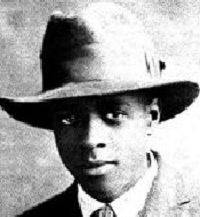 Wallace Thurman
Wallace Thurman
1902-1934
Wallace Henry Thurman (1902-1934) was an American novelist during the Harlem Renaissance. He is best known for his novel, The Blacker the Berry: A Novel of Negro Life, which explores discrimination among black people based on skin color.
Thurman was born in Salt Lake City to Beulah and Oscar Thurman. Between his mother’s many marriages, Wallace and his mother lived with Emma Jackson, his maternal grandmother. His grandmother’s home doubled as a saloon where alcohol was served without a license. When Thurman was less than a month old, his father abandoned his wife and son. It was not until Wallace was 30 years old that he met his father.
Thurman’s early life was marked by loneliness, family instability and illness. He began grade school at age six in Boise, Idaho, but his poor health eventually led to a two-year absence from school, during which he returned to Salt Lake City. From 1910 to 1914, Thurman lived in Chicago, but he would have to finish grammar school in Omaha, Nebraska. During this time, he suffered from persistent heart attacks. While living in Pasadena, California’s, lower altitude in the winter of 1918, Thurman contracted influenza during the worldwide influenza pandemic. Considering his history of illness, he surprisingly recovered and then returned to Salt Lake City, where he finished high school.
Through it all, Thurman was a voracious reader. He enjoyed the works of Plato, Aristotle, Shakespeare, Havelock Ellis, Flaubert, Charles Baudelaire and many others. He even wrote his first novel at the age of 10. He attended the University of Utah from 1919 to 1920 as a pre-medical student. However, in 1922, he transferred to the University of Southern California in Los Angeles but he left without earning a degree. While in Los Angeles, he met and befriended Arna Bontemps and became first a reporter for an African-American-owned newspaper and then a columnist. He also started his first magazine, Outlet, which was intended to be a West Coast equivalent to The Crisis.
In 1925, Thurman moved to Harlem. In less than 10 years, he obtained various jobs as a ghostwriter, a publisher, an editor and a writer of novels, plays and articles. The following year, he became the editor of The Messenger, a socialist journal aimed at blacks. While at The Messenger, Thurman became the first to publish the adult-themed stories of Langston Hughes. Thurman left the journal in October 1926 to become the editor of a white-owned magazine called World Tomorrow. The following month, he collaborated in publishing the literary magazine Fire!!, devoted to the younger negro artists, among whose contributors were Hughes, Zora Neale Hurston, Richard Bruce Nugent, Aaron Douglas and Gwendolyn B. Bennett.
Thurman and others of the “Niggerati” (the deliberately ironic name Thurman used for the young African-American artists and intellectuals of the Harlem Renaissance) wanted to show the real lives of African-Americans, both the good and the bad. Thurman believed that black artists should be more objective in their writings and not so self-conscious that they failed to acknowledge and celebrate the arduous conditions of African-American lives.
Thurman died at the age of 32 from tuberculosis, which many suspect was exacerbated by his long fight with alcoholism.
Source: http://en.wikipedia.org/wiki/Wallace_Thurman
 Bibliography
Bibliography
Press your browser’s BACK button to return to the previous page.
 J.R.R. Tolkien
J.R.R. Tolkien
1892-1973
John Ronald Reuel Tolkien (January 3, 1892-September 2, 1973) was an English writer, poet, philologist and university professor, best known as the author of the classic high fantasy works, The Hobbit, The Lord of the Rings and The Silmarillion.
Tolkien was Rawlinson and Bosworth Professor of Anglo-Saxon at Pembroke College, Oxford, from 1925 to 1945, and Merton Professor of English Language and Literature there from 1945 to 1959. He was a close friend of C.S. Lewis – they were both members of the informal literary discussion group known as the Inklings. Tolkien was appointed a Commander of the Order of the British Empire by Queen Elizabeth II on March 28, 1972.
After his death, Tolkien’s son, Christopher, published a series of works based on his father’s extensive notes and unpublished manuscripts, including The Silmarillion. These, together with The Hobbit and The Lord of the Rings, form a connected body of tales, poems, fictional histories, invented languages and literary essays about a fantasy world called Arda, and Middle-Earth within it.
Tolkien died on September 2, 1973, at the age of 81.
Source: http://en.wikipedia.org/wiki/J._R._R._Tolkien
 Bibliography
Bibliography
Press your browser’s BACK button to return to the previous page.
 Melvin B. Tolson
Melvin B. Tolson
1898-1966
Melvin Beaunorus Tolson (February 6, 1898-August 29, 1966) was an American Modernist poet, educator, columnist and politician. His work concentrated on the experience of African-Americans and includes several long historical poems. His work was influenced by his study of the Harlem Renaissance, although he spent nearly all of his career in Texas and Oklahoma. In 1947, Liberia named Tolson its poet laureate.
Tolson was born in Moberly, Missouri, one of four children of Reverend Alonzo Tolson, a Methodist minister, and Lera (Hurt) Tolson, a seamstress of African-Creek ancestry. Alonzo Tolson was also of mixed race, the son of an enslaved woman and her white master.
He graduated from Lincoln High School in Kansas City in 1919, enrolled at Fisk University but transferred to Lincoln University, Pennsylvania, the next year for financial reasons. Tolson graduated with honors in 1924. He became a member of the Omega Psi Phi fraternity.
In 1947, Tolson began teaching at Langston University, a historically black college in Langston, Oklahoma, where he worked for the next 17 years. He was a dramatist and director of the Dust Bowl Theater at the university. Also in 1947, Liberia appointed Tolson its Poet Laureate. In 1953, he completed a major epic poem in honor of the nation’s centennial, the “Libretto for the Republic of Liberia.”
In 1965, Tolson was appointed to a two-year term at Tuskegee Institute, where he was Avalon Poet.
He died after cancer surgery in Dallas, Texas, on August 29, 1966.
Source: http://en.wikipedia.org/wiki/Melvin_B._Tolson
 Bibliography
Bibliography
Press your browser’s BACK button to return to the previous page.
 Leo Tolstoy
Leo Tolstoy
1828-1910
Lev Nikolayevich Tolstoy (September 9, 1828-November 20, 1910) was a Russian writer who primarily wrote novels and short stories. Later in life, he also wrote plays and essays. His two most famous works, the novels War and Peace and Anna Karenina, are acknowledged as two of the greatest novels of all time and a pinnacle of realist fiction.
Tolstoy is equally known for his complicated and paradoxical persona and for his extreme moralistic and ascetic views, which he adopted after a moral crisis and spiritual awakening in the 1870s, after which he also became noted as a moral thinker and social reformer.
His literal interpretation of the ethical teachings of Jesus, centering on the Sermon on the Mount, caused him in later life to become a fervent Christian anarchist and anarcho-pacifist. His ideas on nonviolent resistance, expressed in such works as The Kingdom of God Is within You, were to have a profound impact on such pivotal 20th century figures as Mohandas Gandhi and Martin Luther King Jr.
Tolstoy died of pneumonia in 1910, at the age of 82.
Source: http://en.wikipedia.org/wiki/Leo_Tolstoy
 Bibliography
Bibliography
Press your browser’s BACK button to return to the previous page.
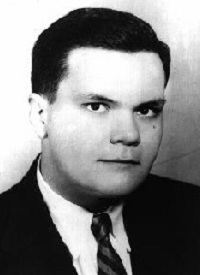 John Kennedy Toole
John Kennedy Toole
1937-1969
John Kennedy Toole (December 17, 1937-March 26, 1969) was an American novelist from New Orleans, Louisiana, best-known for his posthumously published novel, A Confederacy of Dunces. He also wrote The Neon Bible. Although several people in the literary world felt his writing skills were praiseworthy, Toole’s novels were rejected during his lifetime. After suffering from paranoia and depression due in part to these failures, he committed suicide at the age of 31.
Toole was born to a middle-class family in New Orleans. From a young age, his mother taught him an appreciation of culture. She was thoroughly involved in his affairs for most of his life and, at times, they had a difficult relationship. With his mother’s encouragement, Toole became a stage performer at the age of 10, doing comic impressions and acting. At 16, he wrote his first novel, The Neon Bible, which he later dismissed as “adolescent.”
Toole received an academic scholarship to Tulane University. After graduating from Tulane, he studied English at Columbia University in New York while teaching simultaneously at Hunter College. He also taught at various Louisiana colleges and, during his early career as an academician, he was highly valued on the faculty party circuit for his rapier wit and impressionist skills. His studies were interrupted when he was drafted into the U.S. Army to teach English to Spanish-speaking recruits in San Juan, Puerto Rico. After receiving a promotion, he used his private office to begin writing A Confederacy of Dunces, which he finished at his parents’ home after his discharge.
Toole submitted Dunces to publisher Simon & Schuster, where it reached noted editor Robert Gottlieb. Gottlieb considered Toole talented but felt his comic novel was essentially pointless. Despite several revisions, Gottlieb remained unsatisfied and, after the book was rejected by another literary figure, Hodding Carter Jr., he shelved the novel.
Suffering from depression and feelings of self-persecution, Toole left home on a journey around the country. He stopped in Biloxi, Mississippi, to end his life by running a garden hose in from the exhaust of his car to the cabin. Some years later, his mother brought the manuscript of Dunces to the attention of novelist Walker Percy, who ushered the book into print. In 1981, Toole was posthumously awarded the Pulitzer Prize for Fiction.
Source: http://en.wikipedia.org/wiki/John_Kennedy_Toole
 Bibliography
Bibliography
Press your browser’s BACK button to return to the previous page.
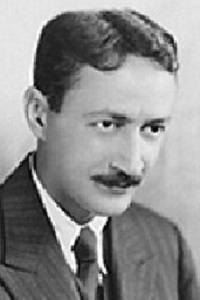 Jean Toomer
Jean Toomer
1894-1967
Nathan Pinchuback Toomer was born in Washington, D.C., of mixed racial and ethnic descent (Dutch, French, Native American, African-American, Welsh, German, Jewish). His parents were Nathan Toomer and Nina Pinchback. His maternal grandfather was Louisiana Governor P.B.S. Pinchback, the first African-American to become governor of a U.S. state.
He spent his childhood attending both all-white and all-black segregated schools. In his early years, Toomer resisted racial classifications and wished to be identified only as an American after going to an all-black school in Washington D.C., then an all-white school in New Rochelle N.Y., then an all-black school in Washington D.C. again. Toomer attended six institutions of higher education between 1914 and 1917 (the University of Wisconsin, the Massachusetts College of Agriculture, the American College of Physical Training in Chicago, the University of Chicago, New York University and the City College of New York) studying agriculture, fitness, biology, sociology and history, but he never completed a degree. The readings that he would undertake and the lectures he attended during his college years shaped the direction his writing would take.
After leaving college, Toomer published some short stories, devoted several months to the study of Eastern philosophies and took a job as a principal in Sparta, Georgia. The segregation Toomer experienced in the South led him to identify more strongly as an African-American.
In 1923, Toomer published the novel Cane, a series of poems and short stories about the black experience in America. His 1936 Whitmanesque long poem, “The Blue Meridian,” dramatically foreshadows the racial discourse of the 21st century and the 2008 presidential campaign.
Toomer found it harder and harder to get published throughout the 1930s and, in 1940, moved with his second wife to Doylestown, Pennsylvania, where he joined the Religious Society of Friends and began to withdraw from society. Toomer wrote a small amount of fiction and published essays in Quaker publications during this time, but devoted most of his time to serving on Quaker committees.
Toomer stopped writing literary works after 1950. He died in 1967 after several years of poor health.
Source: http://en.wikipedia.org/wiki/Jean_Toomer
 Bibliography
Bibliography
Press your browser’s BACK button to return to the previous page.
 Thomas Traherne
Thomas Traherne
1637-1674
Thomas Traherne, the son of a shoemaker, was born in 1637 in Hereford, England. He received his education from the University of Oxford and was ordained as an Anglican clergyman in 1660. Traherne first served in a parish near Credenhill and later became the chaplain to Sir Orlando Bridgeman, Lord Keeper of the Great Seal.
In his lifetime, Traherne published only one work, Roman Forgeries (1673), and very little else is known of his biography. Christian Ethicks, his most important prose work, was published posthumously in 1675. His Thanksgivings appeared anonymously in 1699 as A Serious and Patheticall Contemplation of the Mercies of God. Traherne is often considered as the last of the Metaphysical poets, which included such major figures as John Donne, George Herbert and Henry Vaughn.
The majority of Traherne’s poetry remained unknown until 1896, when two of his manuscripts were discovered by chance in a London bookstall. Poetical Works was first published in 1903; it was followed in 1908 by Centuries of Meditations. In 1910, a manuscript found in the British Museum was published as Traherne’s Poems of Felicity. More of his work continued to come to light over the course of the 20th century. As late as 1967, a poetry manuscript attributed to Traherne was discovered on fire in a refuse dump near Lancashire by a man in search of spare auto parts. The manuscript was published as Commentaries of Heaven: The Poems in 1989. Much of his work to this date remains unpublished.
Traherne’s great theme is the visionary innocence of childhood and, in this respect, he has been compared with William Blake and Walt Whitman. His style, too, bears resemblance to these authors in its incantatory rush, repetitions and disregard for the rules of standard English. His poems, such as the often-anthologized “Shadows in the Water,” suggest that adults have lost the joy of childhood and, with it, an understanding of the divine nature of creation. In his writing, Traherne sought to reclaim this joy in the world.
Thomas Traherne died in 1674 and was buried in Teddington under the reading desk in the church where he had served.
Source: http://www.poets.org/poet.php/prmPID/308
 Bibliography
Bibliography
Press your browser’s BACK button to return to the previous page.
 Geoffrey Trease
Geoffrey Trease
1909-1998
Robert Geoffrey Trease (August 11, 1909-January 27, 1998) was a prolific writer, publishing 113 books between 1934 and 1997. He is best known for writing children’s historical novels whose content reflects his insistence on historically correct backgrounds, which he meticulously researched. However, with his groundbreaking study, Tales Out of School (1949), he was also a pioneer of the idea that children’s literature should be a serious subject for study and debate. When he began his career, his radical viewpoint was a change from the conventional and often jingoistic tone of most children’s literature of the time; he was one of the first authors who deliberately set out to appeal to both boys and girls and to feature strong leading characters of both sexes.
Trease was born in Nottingham in 1909. During his school days at Nottingham High School, he wrote stories, poems and a three-act play that the school performed. He won a Classics scholarship to Oxford University and, although he loved university life, he found the tuition dull. After a year, he resigned his scholarship and left Oxford for London, intent on becoming a writer. He started to fulfill this ambition with the publication of the children’s book, Bows against the Barons, in 1934.
The stories range from ancient Greece (The Crown of Violet) to more recent times and cover (among others): the Middle Ages (The Red Towers of Granada); Elizabethan England (Cue for Treason and Cloak for a Spy); Restoration London (Fire on the Wind and Popinjay Stairs); the French Revolution (Thunder of Valmy); the Bolshevik Revolution (The White Nights of St. Petersburg); and World War II (Tomorrow Is a Stranger and The Arpino Assignment). Other exciting historical events of the 20th century are covered in Bring Out the Banners, Shadow under the Sea, Calabrian Quest and Song for a Tattered Flag.
Trease also wrote modern school stories, such as the five Black Banner novels set in the Lake District (the first was No Boats on Bannermere), adult novels, history, plays for radio and television and biographies. He wrote three books of autobiography: A Whiff of Burnt Boats (1971), Laughter at the Door (1974) and, in the last year of his life, the final part, Farewell the Hills.
He had 113 books published before “deciding to call it a day” because of illness at the age of 88. He lived in Colwall, very near the Downs School, Great Malvern, but spent the last few years of his life in Bath.
Source: http://en.wikipedia.org/wiki/Geoffrey_Trease
 Bibliography
Bibliography
Press your browser’s BACK button to return to the previous page.
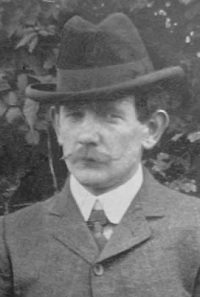 Robert Tressell
Robert Tressell
1870-1911
Robert Tressell (April 17, 1870-February 3, 1911) was the nom-de-plume of Robert Croker, latterly Robert Noonan, an Irish writer best known for his novel, The Ragged Trousered Philanthropists.
Tressell was born in Dublin, Ireland, when it was part of the United Kingdom of Great Britain and Ireland, the illegitimate son of Samuel Croker, a senior member of the Royal Irish Constabulary. He was christened Robert Croker in the Roman Catholic Church. His father, who was not Catholic, had his own family but attempted to provide for Robert financially before his death in 1875.
In 1888, Tressell moved to Cape Town, South Africa where, despite not having an apprenticeship, he became a painter and decorator. When he married in 1891, he was recorded as being “Robert Phillipe Noonan, Decorator.” The marriage was an unhappy one, with his wife having numerous affairs after the birth of their daughter, Kathleen. They divorced in 1895 and Tressell acquired all the property and custody of their daughter, Kathleen, with whom he later moved to Johannesburg, where he secured a well-paying job with a construction company.
Around the turn of the century, Tressell ended up in Hastings, Sussex. Here, he found work as a sign writer, but at much lower wages and in far poorer conditions than he had experienced in South Africa. Kathleen was initially sent to boarding and convent schools but, eventually, Tressell could no longer afford them and she attended state schools instead.
Unemployed and unable to be politically active, he started writing, something he hoped would earn enough money to keep him from the workhouse. He wrote under the pen name “Robert Tressell” as he feared the socialist views expressed in the book would have him blacklisted. He chose the surname Tressell as a pun on the trestle table, an important part of a painter and decorator’s kit. Tressell completed The Ragged Trousered Philanthropists in 1910 but the 1,600-page, hand-written manuscript was rejected by the three publishing houses. The rejections severely depressed him and his daughter had to save the manuscript from being burned. It was placed for safekeeping in a metal box underneath her bed.
Unhappy with his life in Britain, he decided that he and Kathleen should emigrate to Canada. However, he got only as far as Liverpool when he was admitted to the Royal Liverpool Infirmary Workhouse, where he died of phthisis pulmonalis – a wasting away of the lungs – on February 3, 1911.
Kathleen mentioned her father’s novel to a friend of hers, writer Jessie Pope, who recommended it to her publisher. In April 1914, the publisher bought the rights to the book for £25 and an unabridged edition was published in 1955.
Source: http://en.wikipedia.org/wiki/Robert_Tressell
 Bibliography
Bibliography
Press your browser’s BACK button to return to the previous page.
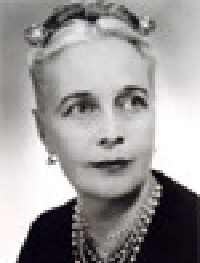 Elizabeth Borton de Trevino
Elizabeth Borton de Trevino
1904-2001
Mary Elizabeth Borton de Trevino (September 2, 1904-December 2, 2001) is an American author. She was born in Bakersfield, California, the daughter of attorney Fred Ellsworth Borton and Carrie Louise Christensen. Her family were all enthusiastic readers; Fred Borton had published short stories and poems before becoming a lawyer. Elizabeth always wanted to become an author. She began writing poetry at age six and had her first published poem at eight. Her parents strongly encouraged her ambitions.
She attended Stanford University, graduating Phi Beta Kappa in 1925 with a bachelor’s degree in Latin American history. After finishing college, she moved to Massachusetts to study violin at the Boston Conservatory and then worked as a reporter.
On her marriage on August 10, 1935, to Luis Trevino Arreola y Gomez Sanchez de la Barquera, she moved to his hometown of Monterrey, Mexico. They had two sons, Luis Fredrico Trevino-Borton and Enrique Ricardo Trevino-Borton. After their sons were born, they lived in Monterrey for a time, then moved to Mexico City in 1941. In 1965, they made a final move to Cuernavaca, Morelos, known popularly as the “City of Eternal Spring.”
Her book, I, Juan de Pareja (1965), won the Newbery Medal in 1966. It was inspired by her elder son Luis’ interest in art, particularly painting. Luis told her the story of the artist Diego Velazquez and his slave, Juan de Pareja, model to one of Velazquez’s most famous paintings, whom Velazquez instructed in painting and later freed. After seeing the original of Velazquez’s painting of Juan, she was inspired to write about their friendship. Her younger son, Enrique, was the translator of the Spanish edition of the novel.
Among her other novels are: Nacar the White Deer; The Greek of Toledo; Casilda of the Rising Moon; El Guero: A True Adventure Story; Beyond the Gates of Hercules; and The Fourth Gift.
In later life, Borton wrote several memoirs of her life as an American who had married into a traditional Mexican family: the bestseller, My Heart Lies South, and its sequels, Where the Heart Is and The Hearthstone of My Heart. Her last book, Leona: A Love Story, was published in 1994, when she was 90 years of age.
Elizabeth Borton de Trevino died December 2, 2001, in Cuernavaca, Mexico, aged 97.
Source: http://en.wikipedia.org/wiki/Elizabeth_Borton_de_Trevi%C3%B1o
 Bibliography
Bibliography
Press your browser’s BACK button to return to the previous page.
 William Trevor
William Trevor
1928-2016
William Trevor (May 24, 1928-November 20, 2016) was an Irish author and playwright. He was considered one of the elder statesmen of the Irish literary world.
Trevor resided in England since the 1950s. Over the course of his long career, he wrote several novels and hundreds of short stories, for which he is best known. He won the Whitbread Prize three times and was nominated five times for the Booker Prize, most recently for his novel, Love and Summer (2009), which was also short-listed for the International IMPAC Dublin Literary Award in 2011.
Born as William Trevor Cox in Mitchelstown, County Cork, Ireland to a middle-class Protestant family, he moved several times to other provincial towns, including Skibbereen, Tipperary, Youghal and Enniscorthy, as a result of his father’s work as a bank official. He was educated at St. Columba’s College, Dublin, and at Trinity College, Dublin, from which he received a degree in history.
Trevor worked as a sculptor under the name Trevor Cox after his graduation from Trinity College, supplementing his income by teaching. He married Jane Ryan in 1952 and emigrated to England two years later, working as a copywriter for an advertising agency.
His first novel, A Standard of Behaviour, was published in 1958 but had little critical success. In 1964, at the age of 36, Trevor won the Hawthornden Prize for Literature for The Old Boys. The win encouraged him to become a full-time writer.
In 2002, he was knighted by Queen Elizabeth II for services to literature. He and his family moved to Devon in England. Despite having spent most of his life in England, he considered himself to be “Irish in every vein.”
William Trevor died peacefully in his sleep during the early hours of November 20, 2016, at his home. He was 88 years old.
Source: http://en.wikipedia.org/wiki/William_Trevor
 Bibliography
Bibliography
Press your browser’s BACK button to return to the previous page.
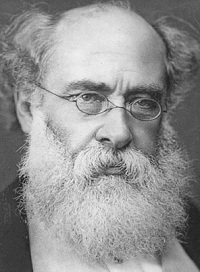 Anthony Trollope
Anthony Trollope
1815-1882
Anthony Trollope (April 24, 1815-December 6, 1882) was one of the most successful, prolific and respected English novelists of the Victorian era. Some of his best-loved works, collectively known as The Chronicles of Barsetshire, revolve around the imaginary county of Barsetshire. He also wrote perceptive novels on political, social and gender issues and on other topical matters.
Born in London, Anthony attended Harrow School as a free day-pupil for three years from the age of seven because his father’s farm, acquired for that reason, lay in that neighborhood. After a spell at a private school at Sunbury, he followed his father and two older brothers to Winchester College, where he remained for three years.
Though Trollope had decided to become a novelist during his employment as a postal surveyor’s clerk in Ireland, he had accomplished very little writing during his first three years.
Trollope began writing on the numerous long train trips around Ireland he had to take to carry out his postal duties. Setting very firm goals about how much he would write each day, he eventually became one of the most prolific writers of all time. He wrote his earliest novels while working as a Post Office inspector, occasionally dipping into the “lost-letter” box for ideas.
Trollope wrote four novels about Ireland. Two were written during the Great Famine of the mid-19th century, while the third deals with the famine as a theme (The Macdermots of Ballycloran, The Landleaguers, and Castle Richmond, respectively). A fourth, The Kellys and the O’Kellys, was published in 1848. Two short stories deal with Ireland (“The O’Conors of Castle Conor, County Mayo” and “Father Giles of Ballymoy”).
In 1851, Trollope was sent to England, charged with investigating and reorganizing rural mail delivery in a portion of the country. The two-year mission took him over much of Great Britain, often on horseback. Trollope describes this time as “two of the happiest years of my life.” In the course of it, he visited Salisbury Cathedral and there, according to his autobiography, he conceived the plot of The Warden, which became the first of the six Barsetshire novels.
He immediately began work on Barchester Towers, the second Barsetshire novel. Upon its publication in 1857, he received an advance payment of £100 (about £7,500 in 2011 consumer pounds) against his share of the profits. Like The Warden, Barchester Towers did not reach large sales, but it helped to establish Trollope’s reputation. For the following novel, The Three Clerks, he was able to sell the copyright for a lump sum of £250; he preferred this to waiting for a share of future profits.
In 1880, Trollope moved to the village of South Harting in West Sussex. He spent some time in Ireland in the early 1880s, researching his last, unfinished, novel, The Landleaguers. He died in London in 1882.
Source: http://en.wikipedia.org/wiki/Anthony_Trollope
 Bibliography
Bibliography
Press your browser’s BACK button to return to the previous page.
 Lynne Truss
Lynne Truss
1955-
Lynne Truss (born in 1955, Kingston upon Thames) is an English writer and journalist, best known for her popular book, Eats, Shoots & Leaves: The Zero Tolerance Approach to Punctuation.
Lynne Truss grew up in Petersham and was educated at Tiffin Girls’ Grammar School in Kingston. She earned a first-class honors degree at University College London in English Language and Literature.
After university in 1977, she joined The Radio Times as a sub-editor before moving in 1978 to The Times Higher Education Supplement as the deputy literary editor. She began freelance writing at the same time. Truss was literary editor of The Listener (1986-90) and was an arts and books reviewer for The Independent on Sunday before joining The Times in 1991, where first she spent six years writing television criticism, illustrated by John Minnion, followed by four years as a sports columnist. She won Columnist of the Year for her work for Woman’s Journal. She now reviews books for The Sunday Times. Her book, Eats, Shoots & Leaves (2003), about the misuse of punctuation, became a bestseller in both Britain and the United States. The book’s declaration for a “Zero Tolerance Approach to Punctuation” is considered a rallying call for punctuation “sticklers” of the world. In 2005, she released a book on rudeness, Talk to the Hand: The Utter Bloody Rudeness of the World Today (or six good reasons to stay home and bolt the door).
She is the author of three novels and numerous radio comedy dramas, including the Radio 4 comedy series, Acropolis Now, and is a familiar voice on BBC Radio 4. Truss also hosted Cutting a Dash, a popular BBC Radio 4 series about punctuation and frequently delivered humorous monologues in the Fourth Column series. Her 2002/5 radio monologues for actors, A Certain Age, were collected for publication as a book in 2007. Also in 2007, Radio 4 broadcast her comic drama series, Inspector Steine, about an incompetent police officer in 1950s Brighton. This was followed by The Casebook of Inspector Steine in 2008. Her latest book is Get Her Off the Pitch! How Sport Took Over My Life, about her work as a sports reporter. This was serialized as a Book of the Week on Radio 4 during the week of October 5, 2009.
Source: http://en.wikipedia.org/wiki/Lynne_Truss
 Bibliography
Bibliography
Press your browser’s BACK button to return to the previous page.
 Sojourner Truth
Sojourner Truth
1777-1883
The woman we know as Sojourner Truth was born into slavery in New York as Isabella Baumfree (after her father’s owner, Baumfree). She was sold several times and, while owned by the John Dumont family in Ulster County, married Thomas, another of Dumont’s slaves. She had five children with Thomas. In 1827, New York law emancipated all slaves, but Isabella had already left her husband and run away with her youngest child. She went to work for the family of Isaac Van Wagenen.
While working for the Van Wagenen’s – whose name she used briefly – she discovered that a member of the Dumont family had sold one of her children to slavery in Alabama. Because this son had been emancipated under New York Law, Isabella sued in court and won his return.
Isabella experienced a religious conversion, moved to New York City to a Methodist perfectionist commune and there came under the influence of a religious prophet named Mathias. The commune fell apart a few years later, with allegations of sexual improprieties and even murder. Isabella herself was accused of poisoning and sued successfully for libel. She continued as well during that time to work as a household servant.
In 1843, she took the name Sojourner Truth, believing this to be on the instructions of the Holy Spirit, and became a traveling preacher (the meaning of her new name). In the late 1840s, she connected with the abolitionist movement, becoming a popular speaker. In 1850, she also began speaking for women’s suffrage. Her most famous speech, “Ain’t I a Woman?” was given in 1851 at a women’s rights convention in Ohio.
Sojourner Truth met Harriet Beecher Stowe, who wrote about her for The Atlantic Monthly and wrote a new introduction to Truth’s autobiography, The Narrative of Sojourner Truth.
Sojourner Truth moved to Michigan and joined yet another religious commune, this one associated with the Friends. She was at one point friendly with Millerites, a religious movement that grew out of Methodism and later became the Seventh Day Adventists.
During the Civil War, Sojourner Truth raised food and clothing contributions for black regiments and met Abraham Lincoln at the White House in 1864. While there, she tried to challenge the discrimination that segregated street cars by race.
After the war ended, Sojourner Truth again spoke widely, advocating for some time a “Negro State” in the west. She spoke mainly to white audiences and mostly on religion, “Negro” and women’s rights, and on temperance, though immediately after the Civil War she tried to organize efforts to provide jobs for black refugees from the war.
Active until 1875, when her grandson and companion fell ill and died, Sojourner Truth returned to Michigan, where her health deteriorated and she died in 1883 in a Battle Creek sanatorium from infected ulcers on her legs. She was buried in Battle Creek, Michigan, after a very well-attended funeral.
Source: http://womenshistory.about.com/od/sojournertruth/a/sojourner_truth_bio.htm
 Bibliography
Bibliography
Press your browser’s BACK button to return to the previous page.
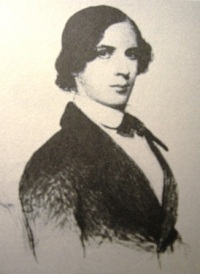 Frederick Goddard Tuckerman
Frederick Goddard Tuckerman
1821-1873
Frederick Goddard Tuckerman (February 4, 1821-May 9, 1873) was an American poet, remembered mostly for his sonnet series. Apart from the 1860 publication of his book, Poems, which included approximately two-fifths of his lifetime sonnet output and other poetic works in a variety of forms, the remainder of his poetry was published posthumously in the 20th century.
Tuckerman was born into a prosperous and distinguished Boston family. According to a family genealogy, privately printed by a relative, Bayard Tuckerman, in 1917, he entered Harvard University in 1841 but did not remain long due to an eye problem. Bayard Tuckerman goes on to write: “Later, he entered the law school, graduating in 1842, and was admitted to the Suffolk Bar. Finding the practice of law distasteful, he abandoned it and devoted himself to the pursuit of his favorite studies – literature, botany and astronomy. His love of nature led him in early manhood to settle in the country.”
According to N. Scott Momaday, “In 1847, he removed to Greenfield, in western Massachusetts. The life he began at Greenfield was a strange one for a man in his middle 20s; it was a life of relative seclusion and retirement. He married in the same year Hannah Lucinda Jones, a dark-haired, gentle woman whose disposition was well-suited to his own. Ten years later, Hannah died, within a week after the birth of her third child. Her death was the deepest hurt of Tuckerman’s life and the beginning of his final solitude.”
Despite Tuckerman’s general isolation, both before and after his wife’s death, the poet did travel abroad. He published Poems in 1860, the only poetry collection published in his lifetime.
Tuckerman died May 9, 1873, in Greenfield.
Source: http://en.wikipedia.org/wiki/Frederick_Goddard_Tuckerman
 Bibliography
Bibliography
Press your browser’s BACK button to return to the previous page.
 Ivan Turgenev
Ivan Turgenev
1818-1883
Ivan Turgenev (November 9, 1818-September 3, 1883) was born into a wealthy landowning family with many serfs in southern Russia. His father, a cavalry colonel, died when he was 15, and he was raised by his abusive mother, who ruled her 5,000 serfs ruthlessly with a whip. He never married but fathered a daughter with one of their family serfs.
Turgenev studied at Universities of Moscow, St. Petersburg and Berlin and, later in his life, received a Doctorate degree from Oxford. Turgenev lived in Western Europe for most of his life and admired the advancements of the Western civilization.
He advocated modernization of Russia and liberation of serfs. In “A Sportsman’s Sketches” (1852), he bitterly criticized serfdom and, in “A Nest of Nobles” (1859) and “On the Eve,” he focused on the social and political troubles brewing in Russia. In his masterpiece, Fathers and Sons (1862), Turgenev presented a man of the new generation, an educated and open-minded medical student Basarov, in a conflict with the old generation of “fathers,” who are standing for the ultra-conservative Russia.
After being wildly attacked by Russian critics, Turgenev retired in Europe, living in Baden-Baden and Paris. His late stories, “First Love,” “Asya,” “Torrents of Spring” and a collection, Poetry in Prose, are among the finest in all of Russian literature.
He died of spinal cancer in Bougival, near Paris, and was buried in St. Petersburg, Russia.
Source: http://www.imdb.com/name/nm0877057/bio
 Bibliography
Bibliography
Press your browser’s BACK button to return to the previous page.
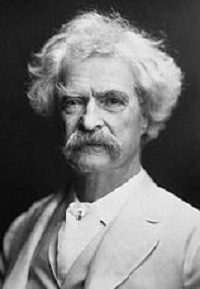 Mark Twain
Mark Twain
1835-1910
Samuel Langhorne Clemens (November 30, 1835-April 21, 1910), better known by his pen name, Mark Twain, was an American author and humorist. He is most noted for his novels, The Adventures of Tom Sawyer (1876) and its sequel, Adventures of Huckleberry Finn (1885), the latter often called “the great American novel.”
Twain grew up in Hannibal, Missouri, which would later provide the setting for Huckleberry Finn and Tom Sawyer. He apprenticed with a printer. He also worked as a typesetter and contributed articles to his older brother Orion’s newspaper. After toiling as a printer in various cities, he became a master riverboat pilot on the Mississippi River before heading west to join Orion. He was a failure at gold mining, so he next turned to journalism. While a reporter, he wrote a humorous story, “The Celebrated Jumping Frog of Calaveras County,” which became very popular and brought nationwide attention. His travelogues were also well-received. Twain had found his calling.
He achieved great success as a writer and public speaker. His wit and satire earned praise from critics and peers and he was a friend to presidents, artists, industrialists and European royalty.
He lacked financial acumen and, though he made a great deal of money from his writings and lectures, he squandered it on various ventures, in particular the Paige Compositor, and was forced to declare bankruptcy. With the help of Henry Huttleston Rogers, he eventually overcame his financial troubles. Twain worked hard to ensure that all of his creditors were paid in full, even though his bankruptcy had relieved him of the legal responsibility.
Twain was born during a visit by Halley’s Comet, and he predicted that he would “go out with it” as well. He died the day following the comet’s subsequent return.
Source: http://en.wikipedia.org/wiki/Mark_Twain
 Bibliography
Bibliography
Press your browser’s BACK button to return to the previous page.
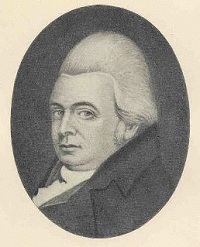 Royall Tyler
Royall Tyler
1757-1826
Royall Tyler was born into a prosperous and enterprising Boston family. His intellectual qualities were early recognized for, when he graduated from Harvard in 1776, he was awarded a bachelor’s degree from Yale as well. He interrupted his legal studies to serve as a major during the American Revolution, was admitted to the bar in 1780 and joined the law office of John Adams. Tyler fell in love with the future president’s daughter; but the engagement was broken off, reportedly because Adams disapproved of Tyler’s high-spirited temperament. Tyler once more joined the Army during Shays’ Rebellion (1786) and his eloquent speeches contributed to calming the rioters.
While on military business in New York in 1787, Tyler attended the theater and, after seeing a production of The School for Scandal, was inspired to write his own comedy. The result, written in three weeks, was The Contrast, America’s first successful drama and its first comedy to deal with native characters. A comedy of manners, it contrasted the substantial American virtues with artificial “English” behavior and it introduced, in the character of Jonathan, what became the stock stage Yankee. The Contrast was popular throughout America for its theatrical and nationalistic aspects. The acclaim given it inspired other native dramatists.
Though Tyler continued to practice law, he wrote at least six other plays. Of the four that survive, three are biblical verse plays and the other a social satire, The Island of Barrataria. Tyler also employed his satirical wit on a number of verse and prose works, most importantly a picaresque adventure novel, The Algerine Captive (1797), which also portrays fraudulence in education and medicine and depicts the horrors of slavery.
After 1800, Tyler’s legal career consumed more and more of his time. As a justice of the Supreme Court of Vermont, he handed down a significant antislavery decision in 1802. He served as chief justice of that body from 1807 to 1813 and as professor of jurisprudence at the University of Vermont until 1814. Though all of Tyler’s literary endeavors were published anonymously (perhaps because he felt they might have a negative effect upon his judicial position), he attempted all his life to fuse his two occupations. As a member of the legal profession, he sought to correct those ills and follies that he satirized in his writing.
He died in Brattleboro, Vermont.
Source: http://www.answers.com/topic/tyler-royall
 Bibliography
Bibliography
Press your browser’s BACK button to return to the previous page.
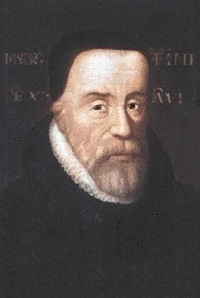 William Tyndale
William Tyndale
1492-1536
William Tyndale, translator of the New Testament and Pentateuch, was born on the Welsh border, probably in Gloucestershire, sometime between 1490 and 1495. In Easter term 1510, he went to Oxford, where Foxe says he was entered of Magdalen Hall. He took his M.A. degree in 1515 and moved to Cambridge, where Erasmus had helped to establish a reputation for Greek and theology.
Ordained to the priesthood, probably toward the close of 1521, he entered the household of Sir John Walsh, Old Sodbury, Gloucestershire, as chaplain and domestic tutor. Here, he lived for two years, using his leisure in preaching in the villages and at Bristol, conduct that brought him into collision with the backward clergy of the district and led to his being summoned before the chancellor of Worcester (William of Malvern) as a suspected heretic; he was allowed to depart without receiving censure or giving any undertaking. But the persecution of the clergy led him to seek an antidote for what he regarded as the corruption of the Church and he resolved to translate the New Testament into the vernacular. He got employment as a preacher at St. Dunstan’s-in-the-West and worked at his translation, living as chaplain in the house of Humphrey Monmouth, an alderman, and forming a firm friendship with John Frith; but finding publication impossible in England, he sailed for Hamburg in May 1524.
After visiting Luther at Wittenberg, he settled with his amanuensis, William Roy, in Cologne, where he had made some progress in printing an edition of his New Testament, when the work was discovered by John Cochlaeus, dean at Frankfurt, who not only got the senate of Cologne to interdict further printing but warned King Henry VIII and Cardinal Wolsey to watch the English ports. Tyndale and Roy escaped with their sheets to Worms, where the eight-volume edition was completed in 1526. Copies were smuggled into England but were suppressed by the bishops. Attempts were made to seize Tyndale at Worms, but he found refuge at Marburg with Philip, landgrave of Hesse.
About this time, he changed his views on the Eucharist and rejected transubstantiation for the advanced Zwinglian position. His “Parable of the Wicked Mammon” (1528), “Obedience of a Christen Man” (1528), in which the two great principles of the English Reformation are set out – viz. the authority of Scripture in the Church and the supremacy of the king in the state – and “Practyse of Prelates” (1530), a strong indictment of the Roman Church and also of Henry VIII’s divorce proceedings, were all printed at Marburg.
After Henry VIII’s change of attitude toward Rome, Stephen Vaughan, the English envoy to the Netherlands, suggested Tyndale’s return, but the reformer feared ecclesiastical hostility and declined. Henry then demanded Tyndale’s surrender from the emperor as one who was spreading sedition in England, and Tyndale left Antwerp for two years, returning in 1533 and busying himself with revising his translations. In May 1535, he was betrayed by Henry Phillips, to whom he had shown much kindness as a professing student of the new faith. The imperial officers imprisoned him at Vilvorde Castle, the state prison, where he was tried for heresy and condemned.
On August 6, 1536, Tyndale was strangled at the stake and his body afterward burned.
Source: http://www.luminarium.org/renlit/tyndalebio.htm
 Bibliography
Bibliography
Press your browser’s BACK button to return to the previous page.
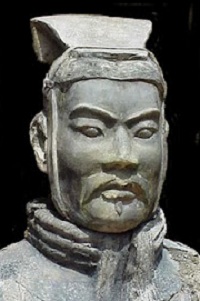 Sun Tzu
Sun Tzu
544 BC-496 BC
Sun Wu (better known as Sun Tzu or Sunzi) was an ancient Chinese military general, strategist and philosopher who is traditionally believed to have authored The Art of War, an influential ancient Chinese book about military strategy. Sun Tzu has had a significant impact on Chinese and Asian history and culture, both as the author of The Art of War and through legend.
Historians have questioned whether or not Sun Tzu was an authentic historical figure. Traditional accounts place him in the Spring and Autumn Period of China (722-481 BC) as a military general serving under King Helu of Wu, who lived c. 544-496 BC. Modern scholars accepting his historicity place the completion of The Art of War in the Warring States Period (476-221 BC), based on the descriptions of warfare in the text and on the similarity of text’s prose to other works completed in the early Warring States Period.
Traditional accounts state that his descendant, Sun Bin, also wrote a treatise on military tactics, titled Sun Bin’s Art of War. Both Sun Wu and Sun Bin were referred to as Sun Tzu in classical Chinese writings and some historians believed that Sun Wu was, in fact, Sun Bin until Sun Bin’s own treatise was discovered in 1972.
Source: http://en.wikipedia.org/wiki/Sun_Tzu
 Bibliography
Bibliography
Press your browser’s BACK button to return to the previous page.
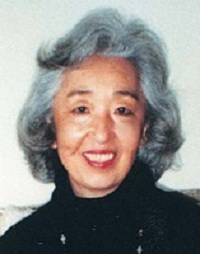 Yoshiko Uchida
Yoshiko Uchida
1921-1992
Yoshiko Uchida was the daughter of Japanese immigrants, Takashi and Iku Uchida. Her father came to the United States from Japan in 1903 and worked for the San Francisco offices of Mitsui and Company. Yoshiko and her sister, Keiko, were both nisei, or second-generation Japanese-Americans, born in the United States. By the age of 10, Uchida was writing stories.
Uchida graduated early from high school and enrolled at University of California, Berkeley at 16. The Uchidas were living in Berkeley, California, and Yoshiko was in her senior year at U.C. Berkeley when the Japanese attacked the naval base at Pearl Harbor in 1941. Soon after, President Franklin D. Roosevelt ordered all Japanese-Americans on the west coast to be rounded up and imprisoned in internment camps. The Uchidas were interned for three years, first at Tanforan Racetrack in California and then in Topaz, Utah. In the camps, Yoshiko taught school and had the chance to view not only the injustices the white Americans were perpetrating, but the varying reactions of Japanese-Americans toward their ill-treatment.
In 1943, Uchida was accepted to graduate school at Smith College in Massachusetts and allowed to leave the camp, but her years there left a deep impression. Her 1971 novel, Journey to Topaz, is fiction but closely follows her own experiences; many of her other books deal with issues of ethnicity, citizenship, identity and cross-cultural relationships.
Over the course of her career Uchida published more than 30 books, including nonfiction for adults and fiction for children and teenagers.
She died in 1992.
Source: http://en.wikipedia.org/wiki/Yoshiko_Uchida
 Bibliography
Bibliography
Press your browser’s BACK button to return to the previous page.
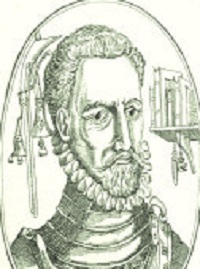 Nicholas Udall
Nicholas Udall
1504-1556
Nicholas Udall (1504-December 23, 1556) was an English playwright, cleric, pederast, schoolmaster and the author of Ralph Roister Doister, generally regarded as the first comedy written in the English language.
Udall was born in Hampshire and educated at Winchester College and Corpus Christi College, Oxford. He was tutored under the guidance of Thomas Cromwell, who mentions him in a letter to John Creke on August 17, 1523, as “Maister Woodall,” and he appears again in Cromwell’s accounts for 1535 as “Nicholas Woodall Master of Eton.”
After graduation from Oxford, he taught at a London grammar school in 1533. He taught Latin at Eton College, of which he was headmaster from about 1534 until 1541, when he was forced to leave after being convicted of offences under the Buggery Act 1533. The felony of buggery, like all other felonies, carried a sentence of capital punishment by hanging, but Udall wrote an impassioned plea to his old friends from Cromwell’s household, Thomas Wriothesley and Sir Ralph Sadler – then joint principal secretaries of state – and his sentence was reduced to just under a year in the Marshalsea prison. That the pupils in question were not also prosecuted suggests that they were under what was then taken as being of the “age of discretion,” i.e., 14 years or older. A former pupil, the poet Thomas Tusser, later claimed Udall flogged him without cause.
A Protestant, he flourished under Edward VI and survived into the reign of the Roman Catholic Mary I. In 1547, he became Vicar of Braintree; in 1551, of Calborne, Isle of Wight; and, in 1554, headmaster of Westminster School.
He translated part of the Apophthegms by Erasmus and assisted in the English version of his Paraphrases of Erasmus, published in 1548 as The First Tome or Volume of the Paraphrase of Erasmus vpon the Newe Testamente. Other works he translated were Pietro Martire’s Discourse on the Eucharist and Thomas Gemini’s Anatomia. His most famous work, the play Ralph Roister Doister, was probably presented to Queen Mary as an entertainment around 1553 but not published until 1566.
With John Leland, he wrote a number of songs to celebrate the coronation of Anne Boleyn on May 31, 1533, using his Latinized name “Udallus.”
Likewise, he is the author of a Latin textbook utilizing material from his comedy as well as works by the Roman poet Terence.
Source: http://en.wikipedia.org/wiki/Nicholas_Udall
 Bibliography
Bibliography
Press your browser’s BACK button to return to the previous page.
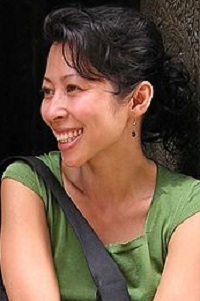 Loung Ung
Loung Ung
1970-
Loung Ung (born 1970) is a Cambodian-American human-rights activist, an internationally recognized lecturer and the national spokesperson for the Campaign for a Landmine-Free World. Between 1997 and 2003, she served in the same capacity for the International Campaign to Ban Landmines, which is affiliated with the Vietnam Veterans of America Foundation.
Ung was born in Phnom Penh, Cambodia, the sixth of seven children and the third of four girls to Seng Im Ung and Ay Choung Ung. Her actual birthdate is unknown; the Khmer Rouge destroyed many of the birth records of the inhabitants of cities in Cambodia. At age 10, she escaped from Cambodia as a survivor of what became known as “the Killing Fields” during the reign of Pol Pot’s Khmer Rouge regime. After emigrating to the United States and adjusting to her new country, she wrote two books that related her life experiences from 1975 through 2003.
Ung’s first memoir, First They Killed My Father: A Daughter of Cambodia Remembers (2000), details her experiences in Cambodia from 1975 until 1980. Her second memoir, Lucky Child: A Daughter of Cambodia Reunites with the Sister She Left Behind (2005), chronicles her adjustment to life in the U.S., with and without her family, and the experiences of her surviving family members in Cambodia during the ensuing warfare between Vietnamese troops and the Khmer Rouge. It covers the period of 1980 until 2003.
Today, Ung is married and lives with her husband in Shaker Heights, a suburb of Cleveland, Ohio.
Source: http://en.wikipedia.org/wiki/Loung_Ung
 Bibliography
Bibliography
Press your browser’s BACK button to return to the previous page.
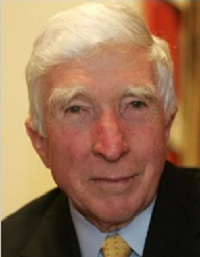 John Updike
John Updike
1932-2009
John Hoyer Updike (March 18, 1932-January 27, 2009) was an American novelist, poet, short story writer, art critic and literary critic.
Updike’s most famous work is his Harry “Rabbit” Angstrom series (the novels Rabbit, Run; Rabbit Redux; Rabbit Is Rich; Rabbit at Rest; and the novella, Rabbit Remembered), which chronicles Rabbit’s life over the course of several decades, from young adulthood to his death. Both Rabbit Is Rich (1981) and Rabbit at Rest (1990) received the Pulitzer Prize. Updike is one of only three authors (the others were Booth Tarkington and William Faulkner) to win the Pulitzer Prize for Fiction more than once.
He published more than 20 novels and more than a dozen short story collections, as well as poetry, art criticism, literary criticism and children’s books. Hundreds of his stories, reviews and poems appeared in The New Yorker, starting in 1954. He also wrote regularly for The New York Review of Books.
His fiction is distinguished by its attention to the concerns, passions and suffering of average Americans, its emphasis on Christian theology and its preoccupation with sexuality and sensual detail.
Updike lived in Beverly Farms, Massachusetts, until his death of lung cancer at a hospice in Danvers, Massachusetts, on January 27, 2009, at the age of 76.
Source: http://en.wikipedia.org/wiki/John_Updike
 Bibliography
Bibliography
Press your browser’s BACK button to return to the previous page.
 Jane Urquhart
Jane Urquhart
1949-
Jane Urquhart (born June 21, 1949) is a Canadian novelist and poet.
Born 200 miles north of Thunder Bay, Ontario, in Little, Ontario, Jane Urquhart is the third of three children and the only daughter of Marian (born Quinn) and Walter (Nick) Carter, a prospector and mining engineer. Urquhart spent her later childhood and adolescence in Toronto, where she was educated at Havergal College, a private school for girls. She received her first B.A in English literature (1971) from the University of Guelph. She returned to the University of Guelph to study art history, obtaining her second B.A. in 1976. The same year, she married Canadian visual artist Tony Urquhart.
She is the author of seven internationally acclaimed novels: The Whirlpool; Changing Heaven; Away; The Underpainter; The Stone Carvers; A Map of Glass; and Sanctuary Line.
She is also the author of a collection of short fiction, Storm Glass, and four books of poetry: I Am Walking in the Garden of His Imaginary Palace; False Shuffles; The Little Flowers of Madame de Montespan; and Some Other Garden.
In 2007, she edited and published The Penguin Book of Canadian Short Stories and, in 2009, she published a biography of Lucy Maud Montgomery as part of Penguin’s Extraordinary Canadians series.
Jane Urquhart lives in Northumberland, County Ontario, Canada, and occasionally in Ireland.
Source: http://en.wikipedia.org/wiki/Jane_Urquhart
 Bibliography
Bibliography
Press your browser’s BACK button to return to the previous page.
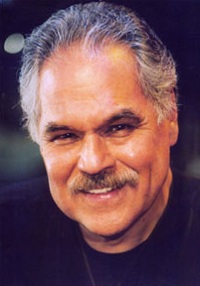 Luis Valdez
Luis Valdez
1940-
Luis Valdez (born June 26, 1940) is an American playwright, writer and film director. He is regarded as the father of Chicano theater in the United States.
Valdez was born in Delano, California, to migrant farm worker parents. He graduated from James Lick High School in San Jose and went on attend San Jose State University (SJSU) on a scholarship for math and physics. He later switched his major and earned a degree in English in 1964.
Valdez’s first full-length play, The Shrunken Head of Pancho Villa, debuted at SJSU in 1963.
In 1965, Valdez returned to Delano, where he formed El Teatro Campesino, a farm worker’s theater troupe. As a media figure of the Chicano Movement, Valdez often lectures about El Teatro Campesino.
Valdez is a founding faculty member and director (c. 1994) of the California State University, Monterey Bay, Teledramatic Arts and Technology Department.
Valdez’s first work that brought him some attention to larger audiences was the play, Zoot Suit. With Zoot Suit, Valdez became the first Chicano director to have a play presented on Broadway in 1979. The film that brought Valdez his “breakthrough into mainstream America” was La Bamba, which debuted in 1987.
Source: http://en.wikipedia.org/wiki/Luis_Valdez
 Bibliography
Bibliography
Press your browser’s BACK button to return to the previous page.
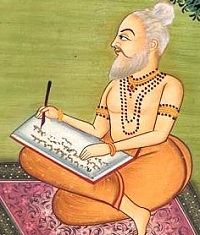 Valmiki
Valmiki
c. 500 BC-c. 100 BC
Valmiki is celebrated as the poet harbinger in Sanskrit literature. He is the author of the epic, Ramayana, based on the attribution in the text of the epic itself. He is revered as the Adi Kavi, which means First Poet, because he discovered the first sloka (“first verse”) that set the base and defined the form to Sanskrit poetry.
At least by the 1st century AD, Valmiki’s reputation as the father of Sanskrit classical poetry seems to have been legendary.
Source: http://en.wikipedia.org/wiki/Valmiki
 Bibliography
Bibliography
Press your browser’s BACK button to return to the previous page.
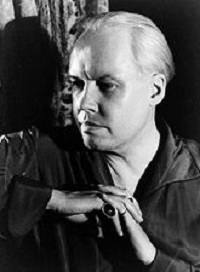 Carl Van Vechten
Carl Van Vechten
1880-1964
Carl Van Vechten (June 17, 1880-December 21, 1964) was an American writer and photographer who was a patron of the Harlem Renaissance and the literary executor of Gertrude Stein.
Born in Cedar Rapids, Iowa, he graduated from Washington High School in 1898 and later the University of Chicago in 1903. In 1906, he moved to New York City. He was hired as the assistant music critic at The New York Times. His interest in opera resulted in his taking a leave of absence from the paper in 1907 to travel to Europe to explore opera. While in England, he married his longtime friend from Cedar Rapids, Anna Snyder. He returned to his job at The New York Times in 1909 and then became the first American critic of modern dance. At that time, Isadora Duncan, Anna Pavlova and Loie Fuller were performing in New York City. The marriage to Anna Snyder ended in divorce in 1912 and he wed actress Fania Marinoff in 1914.
Several books of Van Vechten’s essays on various subjects such as music and literature were published between 1915 and 1920. Between 1922 and 1930, Knopf published seven novels by Van Vechten, starting with Peter Whiffle: His Life and Works and ending with Parties.
Van Vechten was interested in black writers and artists. He knew and promoted many of the major figures of the Harlem Renaissance, including Langston Hughes, Richard Wright and Wallace Thurman. Van Vechten’s controversial novel, Nigger Heaven, was published in 1926. His essay, “Negro Blues Singers,” was published in Vanity Fair in 1926. In the 1930s, Van Vechten began taking portrait photographs.
After the 1930s, Van Vechten published little writing, though he continued to write letters to many correspondents.
He died at the age of 84 in New York City.
Source: http://en.wikipedia.org/wiki/Carl_Van_Vechten
 Bibliography
Bibliography
Press your browser’s BACK button to return to the previous page.
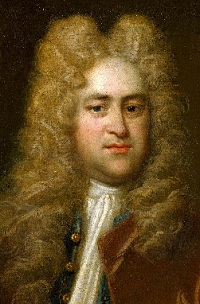 John Vanbrugh
John Vanbrugh
1664-1726
Sir John Vanbrugh (1664-March 26, 1726) was an English dramatist, architect and soldier. Born in London, of Flemish descent, in 1686 he obtained a commission in the army. He was arrested for espionage in 1690 and spent two years in a French prison.
After his return from France, he turned to writing for the stage. His first play, The Relapse (1696), was a counterblast to Colley Cibber’s Love’s Last Shift. Vanbrugh’s masterpiece, The Provoked Wife (1697), was attacked (1698) by Jeremy Collier in his famous diatribe on the immorality of the English stage. Vanbrugh was an inventive playwright, imbued with the wit and cynicism that were common to the Restoration dramatists. His later plays include The Confederacy (1705) and A Journey to London.
As his reputation as an architect grew, Vanbrugh turned away from the stage. He became Wren’s principal colleague and his style – expansive, ostentatious and theatrical – is derived from Wren and from Hawksmoor. His best-known buildings are Blenheim Palace, Castle Howard, the Queen’s Theatre in the Haymarket and Seaton Delaval. He was knighted in 1714.
Vanbrugh died “of an asthma” on March 26, 1726
Source: http://www.infoplease.com/ce6/people/A0850405.html
 Bibliography
Bibliography
Press your browser’s BACK button to return to the previous page.
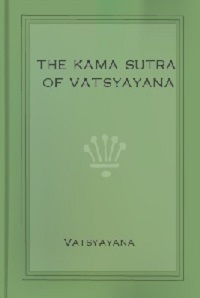 Vatsyayana
Vatsyayana
c. 300-500 AD
Vatsyayana is the name of a Hindu philosopher in the Vedic tradition who is believed to have lived during time of the Gupta Empire (4th to 6th centuries AD) in India. His name appears as the author of the Kama Sutra and of Nyaya Sutra Bhashya, the first commentary on Gotama’s Nyaya Sutras.
It is impossible to fix the exact date either of the life of Vatsyayana or of his work. It is believed that he must have lived between the 1st and 6th century AD on the following grounds: He mentions that Satakarni Satavahana, a king of Kuntal, killed Malayevati, his wife, with an instrument called Katamari by striking her in the passion of love. Vatsyayana quotes this case to warn people of the danger arising from some old customs of striking women when under the influence of sexual passion. This king of Kuntal is believed to have lived and reigned during the 1st century AD and consequently, Vatsyayana must have lived after him.
On the other hand, another author, Varahamihira, in the 18th chapter of his Brihatsanhita, discusses of the science of love and appears to have borrowed largely from Vatsyayana on the subject. Varahamihira is believed to have lived during the 6th century and, therefore, Vatsyayana must have written his works before the 6th century.
Source: http://en.wikipedia.org/wiki/V%C4%81tsy%C4%81yana
 Bibliography
Bibliography
Press your browser’s BACK button to return to the previous page.
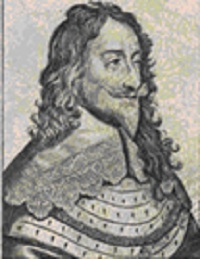 Henry Vaughan
Henry Vaughan
1621-1695
Henry Vaughan was born in 1621 to Thomas Vaughan and Denise Morgan in Newton-upon-Usk in Breconshire, Wales. In 1638, it is assumed, he entered Oxford University with his twin brother, Thomas, who gained fame as a hermetic philosopher and alchemist. In 1640, Vaughan left Oxford to study law in London for two years. His studies were interrupted by the Civil War in which he briefly took the King’s side. He is thought to have served on the Royalist side in South Wales sometime around 1645. Vaughan returned to Breconshire in 1642 as secretary to Judge Lloyd and later began to practice medicine. By 1646, he had probably married Catherine Wise, with whom he was to have a son and three daughters.
In 1646, Poems with the Tenth Satire of Juvenal Englished was published. This was followed in 1650 by the first part of Silex Scintillans, a collection of religious poems. The following year, 1651, Olor Iscanus, or The Swan of Usk, a collection of secular poetry with four prose translations, was published. Vaughan published a few more works, including Thalia rediviva (1678), none of which equaled the fire of Silex. He is considered one of the major Metaphysical Poets, whose works ponder one’s personal relationship to God.
He died on April 23, 1695, and was buried in Llansantffraed churchyard.
Source: http://www.luminarium.org/sevenlit/vaughan/vaughbio.htm
 Bibliography
Bibliography
Press your browser’s BACK button to return to the previous page.
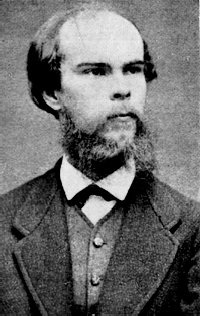 Paul Verlaine
Paul Verlaine
1844-1896
Paul-Marie Verlaine (March 30, 1844-January 8, 1896) was a French poet associated with the Symbolist movement. Born in Metz, he was educated at the Lycee imperial Bonaparte in Paris and then took up a post in the civil service. He began writing poetry at an early age and was initially influenced by the Parnassien movement and its leader, Leconte de Lisle.
Verlaine’s first published poem was published in 1863 in La Revue du progres. His first published collection, Poemes saturniens (1866), though adversely commented upon by Sainte-Beuve, established him as a poet of promise and originality.
Verlaine’s private life spills over into his work, beginning with his love for Mathilde Maute de Fleurville. Maute became Verlaine’s wife in 1870. At the proclamation of the Third Republic in the same year, Verlaine joined the 160th battalion of the Garde nationale, turning Communard on March 18, 1871.
He became head of the press bureau of the Central Committee of the Paris Commune. Verlaine escaped the deadly street fighting known as the Bloody Week, or Semaine Sanglante, and went into hiding in the Pas-de-Calais.
Verlaine’s last years saw his descent into drug addiction, alcoholism and poverty. He lived in slums and public hospitals and spent his days drinking absinthe in Paris cafes. Fortunately, the French people’s love of the arts was able to resurrect support and bring in an income for Verlaine: His early poetry was rediscovered, his lifestyle and strange behavior in front of crowds attracted admiration and, in 1894, he was elected France’s “Prince of Poets” by his peers.
Paul Verlaine died in Paris at the age of 51 on January 8, 1896.
Source: http://en.wikipedia.org/wiki/Paul_Verlaine
 Bibliography
Bibliography
Press your browser’s BACK button to return to the previous page.
 Jules Verne
Jules Verne
1828-1905
Jules Gabriel Verne (February 8, 1828-March 24, 1905) was a French author who pioneered the science-fiction genre. He is best known for his novels, Twenty Thousand Leagues Under the Sea (1870), A Journey to the Center of the Earth (1864) and Around the World in Eighty Days (1873). Verne wrote about space, air and underwater travel before air travel and practical submarines were invented and before practical means of space travel had been devised.
Verne was born in Nantes, in France, to Pierre Verne, an attorney, and his wife, Sophie Allote de la Fuaye. After completing his studies, Verne went to Paris to study law. Around 1848, in conjunction with Michel Carre, he began writing libretti for operettas. For some years, his attentions were divided between the theater and work, but some travelers’ stories he wrote for the Musee des familles revealed to him his true talent: The telling of delightfully extravagant voyages and adventures to which cleverly prepared scientific and geographical details lent an air of verisimilitude.
In 1905, while ill with diabetes, Verne died at his home in Amiens.
Source: http://en.wikipedia.org/wiki/Jules_Verne
 Bibliography
Bibliography
Press your browser’s BACK button to return to the previous page.
 Jones Very
Jones Very
1813-1880
Jones Very (August 28, 1813-May 8, 1880) was an American essayist, poet, clergymen and mystic associated with the American Transcendentalism movement. He was known as a scholar of William Shakespeare and many of his poems were Shakespearean sonnets. He was well-known and respected among the Transcendentalists, though he had a mental breakdown early in his career.
Born in Salem, Massachusetts, to two unwed first cousins, Very became associated with Harvard University, first as an undergraduate, then as a student in the Harvard Divinity School and as a tutor of Greek. He heavily studied epic poetry and was invited to lecture on the topic in his hometown, which drew the attention of Ralph Waldo Emerson. Soon after, Very asserted that he was the Second Coming of Christ, which resulted in his dismissal from Harvard and his eventual institutionalization in an insane asylum. When he was released, Emerson helped him issue a collection, Essays and Poems, in 1839. Very lived the majority of his life as a recluse from then on, issuing poetry only sparingly.
He died in 1880.
Source: http://en.wikipedia.org/wiki/Jones_Very
 Bibliography
Bibliography
Press your browser’s BACK button to return to the previous page.
 Gore Vidal
Gore Vidal
1925-2012
Eugene Luther Gore Vidal (October 3, 1925-July 31, 2012) was an American author, playwright, essayist, screenwriter and political activist. Early in his career, he wrote The City and the Pillar (1948), which outraged mainstream critics as one of the first major American novels to feature unambiguous homosexuality. He subsequently emerged as one of America’s most important literary figures due to the enormous quantity and quality of work produced over the course of his career, including novels, essays, plays and short stories covering a wide variety of topics and eras. He also ran for political office twice and served as a longtime political critic.
Vidal was born in West Point, New York, the only child of 1st Lieutenant Eugene Luther Vidal and Nina Gore. He was born in the Cadet Hospital of the U.S. Military Academy, where his father was the first aeronautics instructor, and was christened by the headmaster of St. Albans preparatory school, his future alma mater.
Vidal was raised in Washington, D.C., where he attended Sidwell Friends School and then St. Albans School. In 1943, on graduating from Phillips Exeter Academy, Vidal joined the U.S. Army Reserve serving in the Aleutian Islands during World War II, where he served as master of an Army freight and supply boat.
Vidal began his writing career at 19 with the publication of the military novel, Williwaw, based upon his Alaskan Harbor Detachment duty. A few years later, The City and the Pillar caused a furor for its dispassionate presentation of homosexuality. Subsequently, he wrote plays, films and television series. Two plays, The Best Man and Visit to a Small Planet, were both Broadway and film successes. In the early 1950s, he also wrote under the pseudonym “Edgar Box,” producing three mystery novels featuring public relations man “Peter Cutler Sargeant II.”
In 1959, Metro-Goldwyn-Mayer film director William Wyler needed script doctors to re-write the Ben-Hur script, originally written by Karl Tunberg. Vidal collaborated with Christopher Fry, reworking the screenplay on condition that MGM release him from the last two years of his contract.
In the 1960s, Vidal wrote three novels. The first, Julian (1964), dealt with the apostate Roman emperor, while the second, Washington, D.C. (1967), focused on a political family during the Franklin D. Roosevelt era. Vidal’s third novel in the ’60s was the satirical transsexual comedy, Myra Breckinridge (1968), a variation on familiar Vidalian themes of sex, gender and popular culture.
After the staging of the plays Weekend (1968) and An Evening with Richard Nixon (1972), and the publication of the novel, Two Sisters (1970), subtitled A Novel in the Form of a Memoir, Vidal focused on essays and two distinct strains in his fiction. Narratives of Empire titles include: Burr (1973); 1876 (1976); Lincoln (1984); Empire (1987); Hollywood (1990); The Golden Age (2000); and another excursion into the ancient world, Creation (1981). Comedic “satirical inventions” include: Myron (1974, a sequel to Myra Breckinridge); Kalki (1978); Duluth (1983); Live from Golgotha: The Gospel according to Gore Vidal (1992); and The Smithsonian Institution (1998).
Vidal was – at least in the U.S. – even more respected as an essayist than as a novelist. In 1987, he wrote the essays titled “Armageddon?” exploring the intricacies of power in contemporary America. In 1993, he won the National Book Award for his collection of essays, United States (1952-1992). A subsequent collection of essays, published in 2000, is The Last Empire. Later, he published such self-described “pamphlets” as Perpetual War for Perpetual Peace, Dreaming War: Blood for Oil and The Cheney-Bush Junta, and Imperial America, critiques of American expansionism, the military-industrial complex, the national security state and the George W. Bush administration. Vidal also wrote an historical essay about the American founding fathers, “Inventing a Nation.” In 1995, he published a memoir, Palimpsest, and in 2006 its followup volume, Point to Point Navigation. Earlier that year, Vidal also published Clouds and Eclipses: The Collected Short Stories.
Vidal died of complications from pneumonia at age 86 at his home in the Hollywood Hills of Los Angeles on July 31, 2012.
Source: http://en.wikipedia.org/wiki/Gore_Vidal
 Bibliography
Bibliography
Press your browser’s BACK button to return to the previous page.
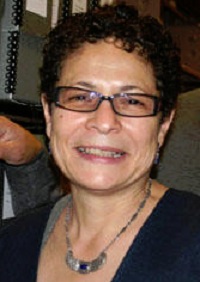 Helena Maria Viramontes
Helena Maria Viramontes
1954-
Helena Maria Viramontes (born February 26, 1954) is an American fiction writer and professor of English.
Viramontes was born into a Mexican-American family. She graduated from Garfield High School. She then worked part-time while attending Immaculate Heart College, from which she earned her Bachelor of Arts in English literature in 1975.
Viramontes attended the graduate program in creative writing at the University of California, Irvine. In 1977, her short story, “Requiem for the Poor,” was awarded a prize from Statement Magazine. In 1979, she won a literary prize from the Spanish department at UC Irvine. In 1981, she left the M.F.A. program.
In 1985, Arte Publico Press published The Moths, a collection of short stories. During her hiatus from academia, she published in many underground literary journals such as Chisme Arte. In 1988, she co-edited Chicana Creativity and Criticism with Maria Herrera-Sobek, a volume dedicated to the literary output of Mexican-American women. She returned to UC Irvine to complete her M.F.A., which was awarded in 1994. As part of the program, she received a grant from the National Endowment for the Arts to attend a writing workshop with the Colombian Nobel Laureate Gabriel Garcia Marquez.
In 1995, her first novel, Under the Feet of Jesus, was published. Later, Their Dogs Came with Them, a novel that took her 17 years to complete, was published.
Her short stories have been published in a variety of literary journals.
Viramontes is a currently a professor of English at Cornell University.
Source: http://en.wikipedia.org/wiki/Helena_Maria_Viramontes
 Bibliography
Bibliography
Press your browser’s BACK button to return to the previous page.
 Virgil
Virgil
70 BC-19 BC
Publius Vergilius Maro (October 15, 70 BC-September 21, 19 BC), usually called Virgil or Vergil in English, was an ancient Roman poet of the Augustan period. He is known for three major works of Latin literature: the Eclogues (or Bucolics), the Georgics and the epic, Aeneid. A number of minor poems, collected in the Appendix Vergiliana, are sometimes attributed to him.
Virgil is traditionally ranked as one of Rome’s greatest poets. His Aeneid has been considered the national epic of ancient Rome from the time of its composition to the present day.
Virgil’s biographical tradition is thought to depend on a lost biography by Varius, Virgil’s editor, which was incorporated into the biography by Suetonius and the commentaries of Servius and Donatus, the two great commentators on Virgil’s poetry. Although the commentaries no doubt record much factual information about Virgil, some of their evidence can be shown to rely on inferences made from his poetry and allegorizing; thus, Virgil’s biographical tradition remains problematic.
The tradition holds that Virgil was born in the village of Andes, near Mantua in Cisalpine Gaul. Macrobius says that Virgil’s father was of a humble background; however, scholars generally believe that Virgil was from an equestrian landowning family that could afford to give him an education. He attended schools in Cremona, Mediolanum, Rome and Naples. After briefly considering a career in rhetoric and law, the young Virgil turned his talents to poetry.
According to the tradition, Virgil traveled to Greece around 19 BC in order to revise the Aeneid. After meeting Augustus in Athens and deciding to return home, Virgil caught a fever while visiting a town near Megara. After crossing to Italy by ship, weakened with disease, Virgil died in Brundisium harbor on September 21, 19 BC.
Source: http://en.wikipedia.org/wiki/Virgil
 Bibliography
Bibliography
Press your browser’s BACK button to return to the previous page.
 Gerald Vizenor
Gerald Vizenor
1934-
Gerald Robert Vizenor (born 1934) is a Native American (Anishinaabe) writer and an enrolled member of the Minnesota Chippewa Tribe, White Earth Reservation. One of the most prolific Native American writers, with more than 30 books to his name, Vizenor also taught for many years at the University of California, Berkeley, where he was Director of Native American Studies. Vizenor is currently Professor Emeritus at the University of California, Berkeley, and Professor of American Studies at the University of New Mexico.
Vizenor has published collections of haiku, poems, plays, short stories, translations of traditional tribal tales, screenplays and, of course, many novels. His first novel, Darkness in Saint Louis Bearheart (1978), later revised as Bearheart: The Heirship Chronicles (1990), brought him immediate attention. In 1992, he published The Heirs of Columbus, in which he teasingly claims that Columbus was in fact a Mayan Indian trying to return home. In Hotline Healers, he claims that Richard Nixon, the American president who did more for American Indians than any other, did so as part of a deal in exchange for traditional “virtual reality” technology.
Vizenor has authored several studies of Native American affairs, most famously Manifest Manners, and has edited several collections of academic work on Native American writing. He is the founder-editor of the American Indian Literature and Critical Studies series at the University of Oklahoma Press (1990 to present), which has provided an important venue for critical work on and by Native writers.
Source: http://en.wikipedia.org/wiki/Gerald_Vizenor#Bibliography
 Bibliography
Bibliography
Press your browser’s BACK button to return to the previous page.
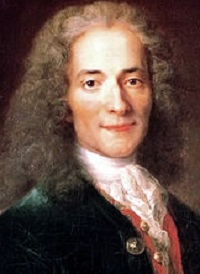 Voltaire
Voltaire
1694-1778
Francois-Marie Arouet (November 21, 1694-May 30, 1778), better known by the pen name Voltaire, was a French Enlightenment writer, historian and philosopher famous for his wit and for his advocacy of civil liberties, including freedom of religion, freedom of expression, free trade and separation of church and state.
Voltaire was a prolific writer, producing works in almost every literary form, including plays, poetry, novels, essays and historical and scientific works. He wrote more than 20,000 letters and more than 2,000 books and pamphlets. He was an outspoken supporter of social reform, despite strict censorship laws with harsh penalties for those who broke them. As a satirical polemicist, he frequently made use of his works to criticize intolerance, religious dogma and the French institutions of his day.
He was born in Paris, the youngest of the five children of Francois Arouet, a notary who was a minor treasury official, and his wife, Marie Marguerite d’Aumart, from a noble family of the province of Poitou. Voltaire was educated by the Jesuits at the College Louis-le-Grand (1704-1711), where he learned Latin and Greek; later in life he became fluent in Italian, Spanish and English.
By the time he left school, Voltaire had decided he wanted to be a writer, against the wishes of his father, who wanted him to become a notary. Voltaire, pretending to work in Paris as an assistant to a notary, spent much of his time writing poetry. When his father found out, he sent Voltaire to study law, this time in Caen. Nevertheless, he continued to write, producing essays and historical studies.
Voltaire’s wit made him popular among some of the aristocratic families with whom he mixed. His father later obtained a job for him as a secretary to the French ambassador in the Netherlands.
Most of Voltaire’s early life revolved around Paris. From early on, Voltaire had trouble with the authorities for even mild critiques of the government and religious intolerance. These activities were to result in numerous imprisonments and exiles. One satirical verse about the Regent led to his imprisonment in the Bastille for 11 months. While there, he wrote his debut play, Aedipe. Its success established his reputation.
He died on May 30, 1778.
Source: http://en.wikipedia.org/wiki/Voltaire
 Bibliography
Bibliography
Press your browser’s BACK button to return to the previous page.
 Kurt Vonnegut
Kurt Vonnegut
1922-2007
Kurt Vonnegut Jr. (November 11, 1922-April 11, 2007) was a 20th century American writer. His works, such as Cat’s Cradle (1963), Slaughterhouse-Five (1969) and Breakfast of Champions (1973), blend satire, gallows humor and science fiction. As a citizen he was a lifelong supporter of the American Civil Liberties Union and a critical liberal intellectual. He was known for his humanist beliefs and was honorary president of the American Humanist Association.
Vonnegut was born in Indianapolis, Indiana, to third-generation German-American parents, Kurt Vonnegut Sr. and Edith Lieber. Vonnegut graduated from Shortridge High School in Indianapolis in May 1940 and matriculated into Cornell University that fall. Though majoring in chemistry, he was assistant managing editor and associate editor of The Cornell Daily Sun. While at Cornell, Vonnegut enlisted in the U.S. Army. The Army transferred him to the Carnegie Institute of Technology and the University of Tennessee to study mechanical engineering.
After the war, Vonnegut attended the University of Chicago as a graduate student in anthropology and also worked at The City News Bureau of Chicago. He left Chicago to work in Schenectady, New York, in public relations for General Electric, where his brother, Bernard, worked in the research department. Vonnegut was a technical writer but was also known for writing well past his typical hours while working.
In the mid-1950s, Vonnegut worked very briefly for Sports Illustrated magazine. On the verge of abandoning writing, he was offered a teaching job at the University of Iowa Writers’ Workshop. While he was there, Cat’s Cradle became a bestseller and he began Slaughterhouse-Five.
Vonnegut died on April 11, 2007, after falling down a flight of stairs in his home and suffering massive head trauma.
Source: http://en.wikipedia.org/wiki/Kurt_Vonnegut
 Bibliography
Bibliography
Press your browser’s BACK button to return to the previous page.
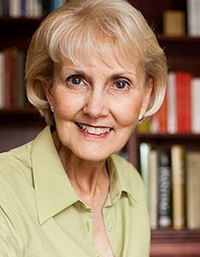 Susan Vreeland
Susan Vreeland
1947-2017
Susan Vreeland (January 20, 1946-August 23, 2017) was an American author. Several of her books deal with the relationship between art and fiction. The Passion of Artemisia is a fictionalized investigation of some aspects of the life of Artemisia Gentileschi, while The Girl in Hyacinth Blue centres round an imaginary painting by Vermeer. The Forest Lover is a fictionalized account of the life of the Canadian painter Emily Carr.
Vreeland was born in Racine, Wisconsin, on January 10, 1946, to William Alex Vreeland and Esther Alberta, née Jancovius. Her mother was from an artistic family and had studied at the Art Institute of Chicago. The family moved to California in 1948. Vreeland took a BA in English and library science at San Diego State University in 1969, an MA in education in 1972, and an MA in English in 1978. She taught high school English in the San Diego Unified School System since 1969, as well as ceramics since 1986. She retired after a 30-year career.
The works of Susan Vreeland include: What Love Sees, a biographical novel (1988); What English Teachers Want: A Survival Guide (1995); Girl in Hyacinth Blue (1999); The Passion of Artemisia (2002); The Forest Lover (2004); Life Studies (2005); Luncheon of the Boating Party (2007); and Clara and Mr. Tiffany (2011).
Her short fiction has appeared in The Missouri Review, New England Review, Confrontation, Alaska Quarterly Review, Calyx, Crescent Review, So to Speak and other journals. She received Inkwell Magazine’s Grand Prize for Fiction in 1999. Her novel, Girl in Hyacinth Blue, was a finalist for Book Sense Book of the Year in 1999 and a nominee for the Dublin International Literary Award. Girl in Hyacinth Blue a won the Theodore Geisel Award presented by The San Diego Book Awards for the “best of the best” and in 2002. Vreeland won this award again for The Passion of Artemisia.
Vreeland died on August 23, 2017 in San Diego after heart surgery. She was 71.
Source: https://en.wikipedia.org/wiki/Susan_Vreeland
 Bibliography
Bibliography